Triumph with Terrific Table Manners
Dining with friends and family should be a convivial, fun, and enlightening occasion, but to ensure that you feel as confident and comfortable as possible, as well to help others feel at ease and appreciated, you should always endeavor to follow the rules of dining etiquette.
- Triumph with Terrific Table Manners
- The Importance of Learning Good Table Manners
- Correct Manners Before the Event Begins
- Essential Table Manners
- Table Manners FAQ
- Etiquette by Occasion: Informal Dining with No Seating
- Etiquette by Occasions: Informal Seated Dining
- How to Eat Properly While at Table
- Leaving the Party
- Conclusion
- Outfit Rundown
As part of our periodic series on the Rules of Civility, we are happy to share with you today our Ultimate Guide to Informal Table Manners and Dining Etiquette.
Distinguishing Between Informal and Formal Dining
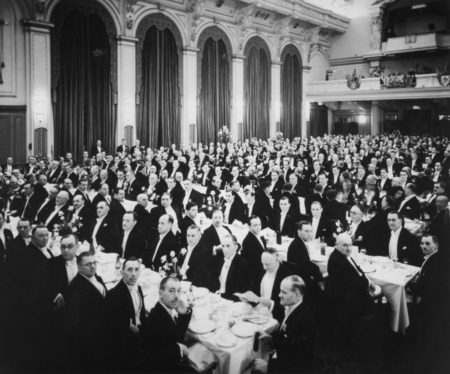
When contrasting “informal dining” with “formal dining,” you might assume that “informal dining” is comparable to “casual dining.” In fact, informal dining encompasses the overwhelming majority of dining events in which you are likely to partake.
Informal dining is a catch-all term that simply indicates all dining that is not formal dining, formal dining being a meal served according to exacting standards of conduct for which guests will often be expected to wear morning dress, Black Tie, or White Tie.
Any meal that is not formal is, by definition, informal, whether you are wearing Cocktail Attire, a business suit, or casual clothes.
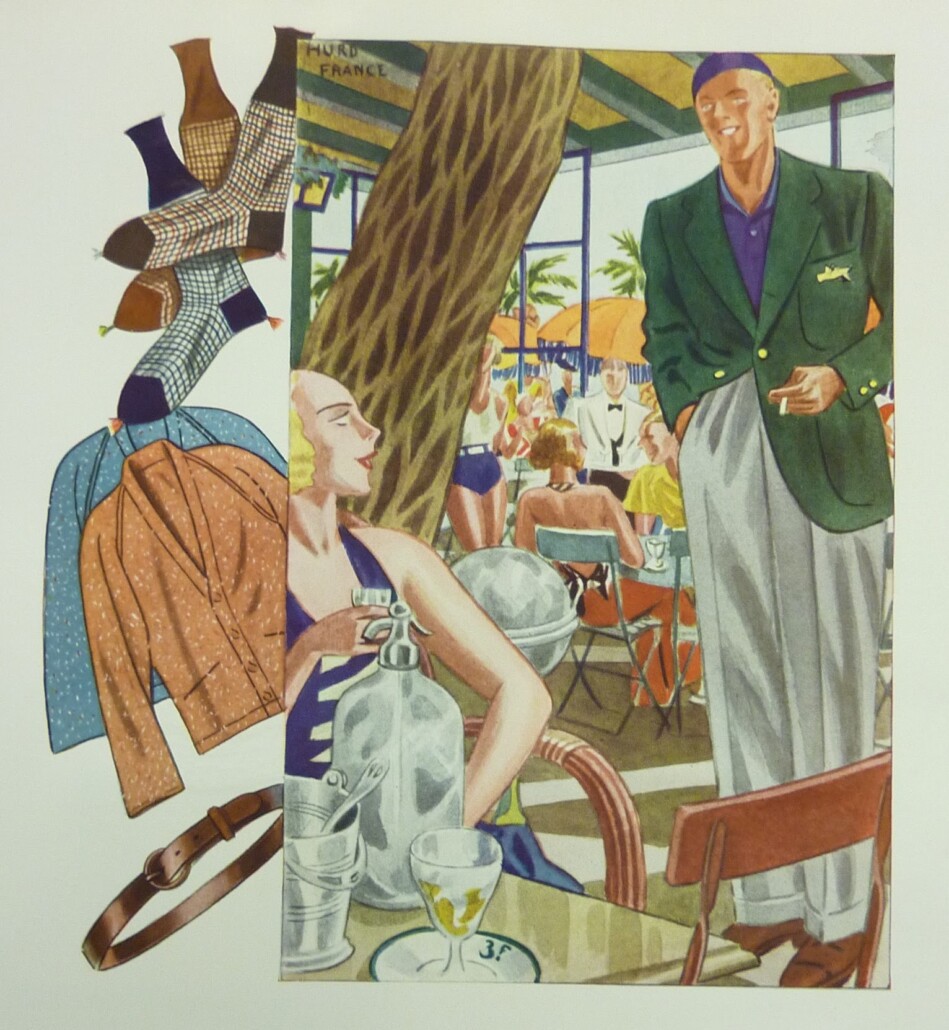
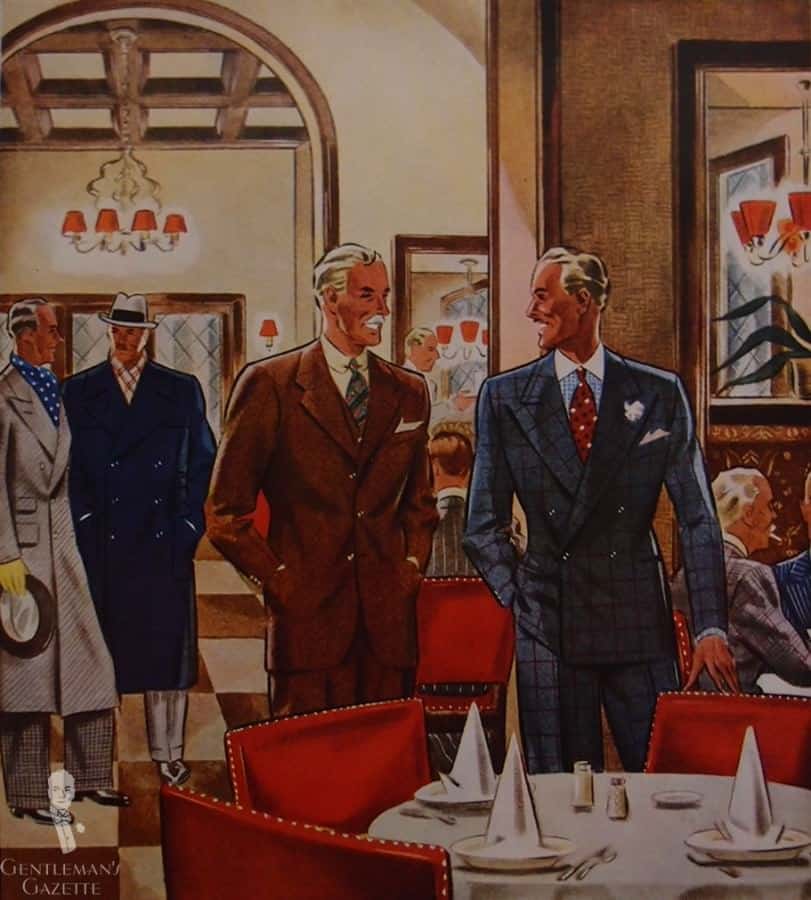
The vast majority of people will have only a few selection occasions – weddings, galas, major anniversaries, and the like – in which to participate in formal dining. Formal dining is its own special occasion with very particular rules and conventions. Fortunately, we explain everything that you need to know about formal dining in our dedicated guide.
Master formal dining here!
The Importance of Learning Good Table Manners
Understanding Dining Etiquette Adds Savor to Every Meal
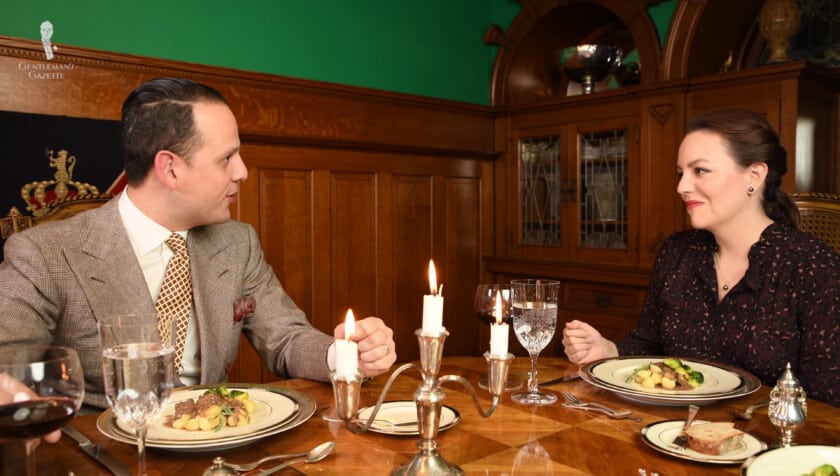
All of us should feel confident when we sit down at a table, whether it is a more formal dining setting with a six-course menu at the country estate of a duke or your sister-in-law’s fortieth birthday party. That confidence comes with knowledge and practice.
Whether at an elegant dinner party or a neighbor’s barbeque, having a basic grasp of dining etiquette is vital when it comes to respecting your host and other guests and will make you feel more confident and collected as well.
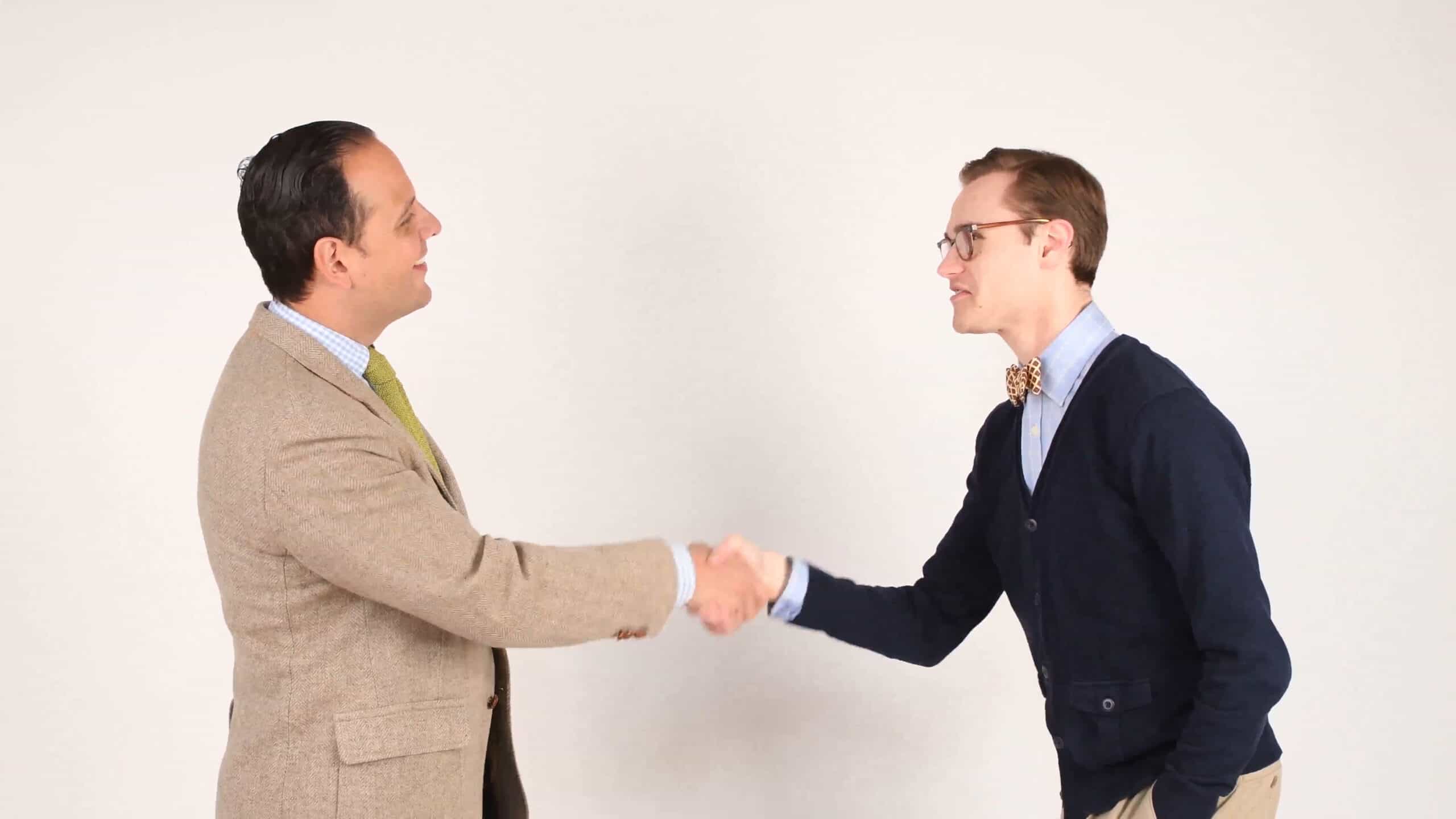
Being Polite Is A Simple Way to Respect Others
At any age, regardless of your station in life or your salary, table manners are essential for two reasons. One is to make others comfortable. When we behave in a polite and considerate way, we indicate to others that we care about their perceptions and want them to feel pleasant and respected. Good manners, including good table manners, are a simple and essential way to express that respect.

Bad Manners Cause Negative Impressions
In addition to respecting others, we also want to conduct ourselves in a manner worthy of respect. Understanding the basics of good table manners makes it much less likely that we will accidentally embarrass ourselves. Knowing dining etiquette will ensure that we won’t accidentally drink from a neighbor’s water glass or start eating too soon, leaving us halfway through our soup when the host says, “Bon Appetit!”
Be the boss of business meals!
Correct Manners Before the Event Begins
Well-Begun is Half Done!
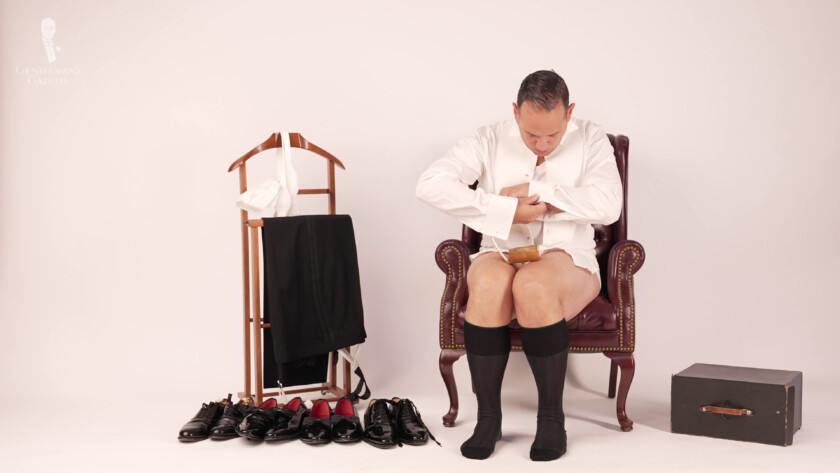
As is common in many aspects of living a decorous and gentlemanly life, proper dining etiquette actually starts long before the wine is uncorked and places are laid down at the table!
The RSVP: Responding to the Invitation
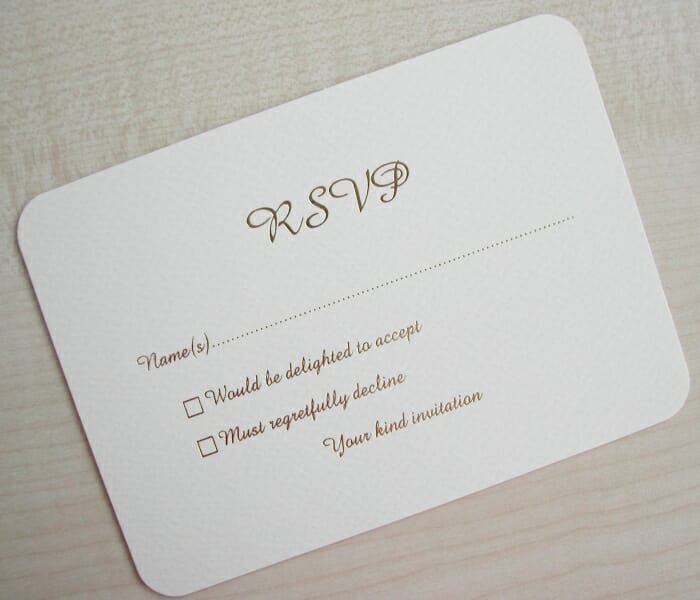
If you receive an invitation to a dining event, you will likely encounter the initialism “R.S.V.P.” These letters stand for the French phrase, “répondez s’il vous plaît,” which literally means, “Respond, if you please.” This expression is usually followed by a time or date by which your host needs to hear back from you as to whether or not you are planning to attend.
Your host needs to know whether or not you will be attending in a timely manner so that they are able to plan their party with a complete and accurate guest list.
For informal occasions, you should ideally dispatch your reply within 24 hours of having received it. If you have legitimate cause to delay responding so that you can account for some aspect of your attendance – making travel plans, hiring a babysitter, resolving personal or family emergencies, and the like – you can safely delay responding for about 72 hours.
That being said, a delayed response is always better than no response.
If There Is An Emergency and You Cannot Attend
Unless you experience a family or personal emergency or are called out of town because of work, attend the dinner if you have indicated you will do so. If such an emergency arises, inform your host as soon as possible so they do not worry about your safety.
Whether a Guest Should Bring a Host or Hostess Gift
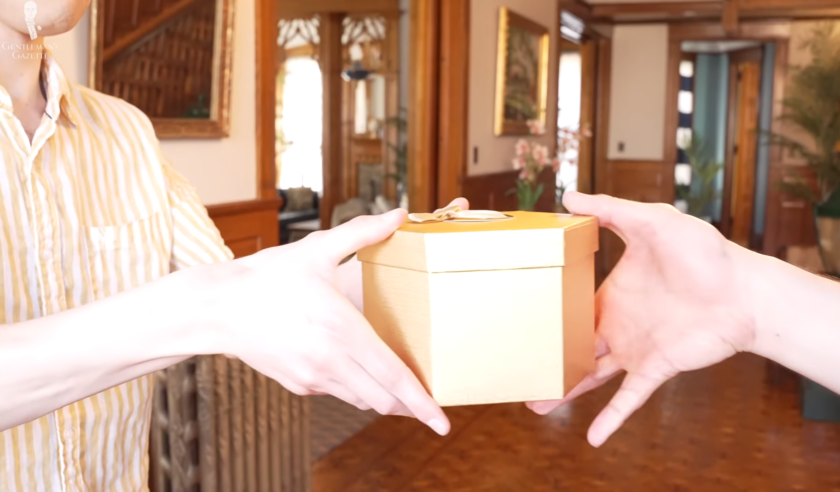
A conventional adage is that you should never visit someone else’s home empty-handed, and while this is still generally good advice, it may or may not be strictly necessary in every culture.
In Asian cultures, especially in Japan, a guest is expected to bring a gift for his host and respectfully dispense it, preferably with both hands extended and the bag where you bought the item discretely included. In Eastern Europe and South America, guests often bring a comestible that is intended to be shared communally. In North America and Western Europe, a gift is often a nice touch but not strictly essential.
While your host or hostess may choose to utilize your gift on that particular evening, do not be offended if he or she does not – it is not intended as an insult but may merely reflect the fact that your host or hostess had other things planned for the evening.

What is a
Hostess Gift?
A hostess gift, referred to as a host gift if the recipient is a man, is a gift brought by a guest to thank the host or hostess for their hospitality. Traditionally, this gift is something consumable that could be used at the current event or a subsequent event, like a bottle of wine, flowers, candles, essential cooking ingredients, dessert, or bread, like a loaf of marble rye.
The Context Surrounding the Event
Considering These Factors Will Tell You About the Event Long Before It Happens

Historically, the date, time, and anticipated guest list of an event would tell you everything that you needed to know when it came to how to dress and what to expect. Nowadays, the rules and conventions of social entertaining are much more relaxed and less rigid, especially for informal dining.
However, taking the following factors into consideration and using your critical thinking skills will allow you to glean considerable information about an event before it occurs, helping you determine how best to dress and what you can expect the evening to be like.
The Location of the Event
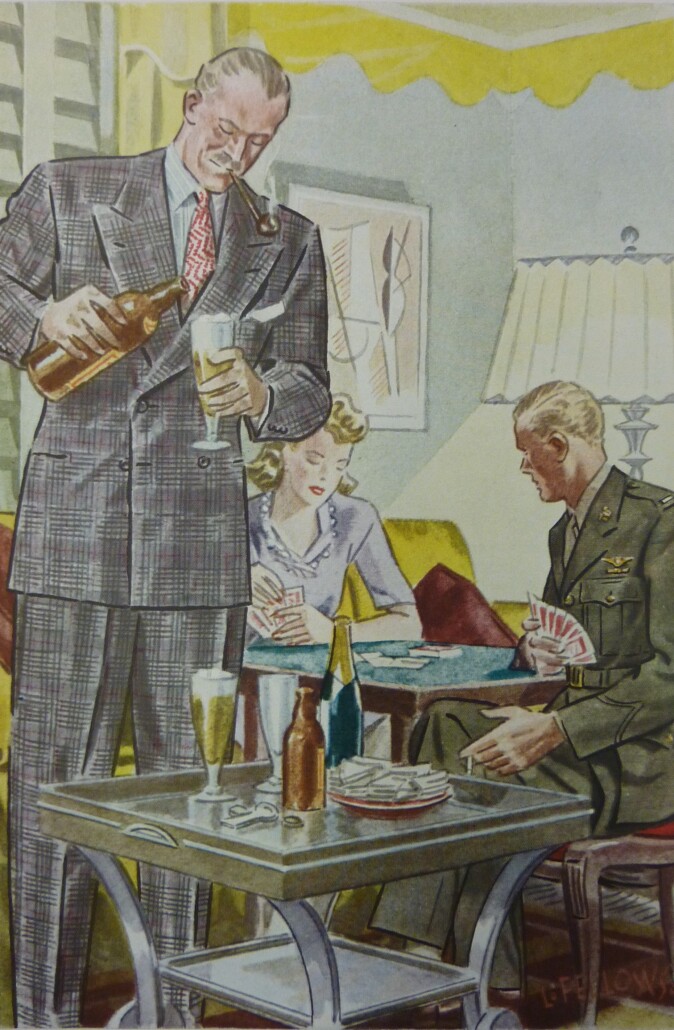
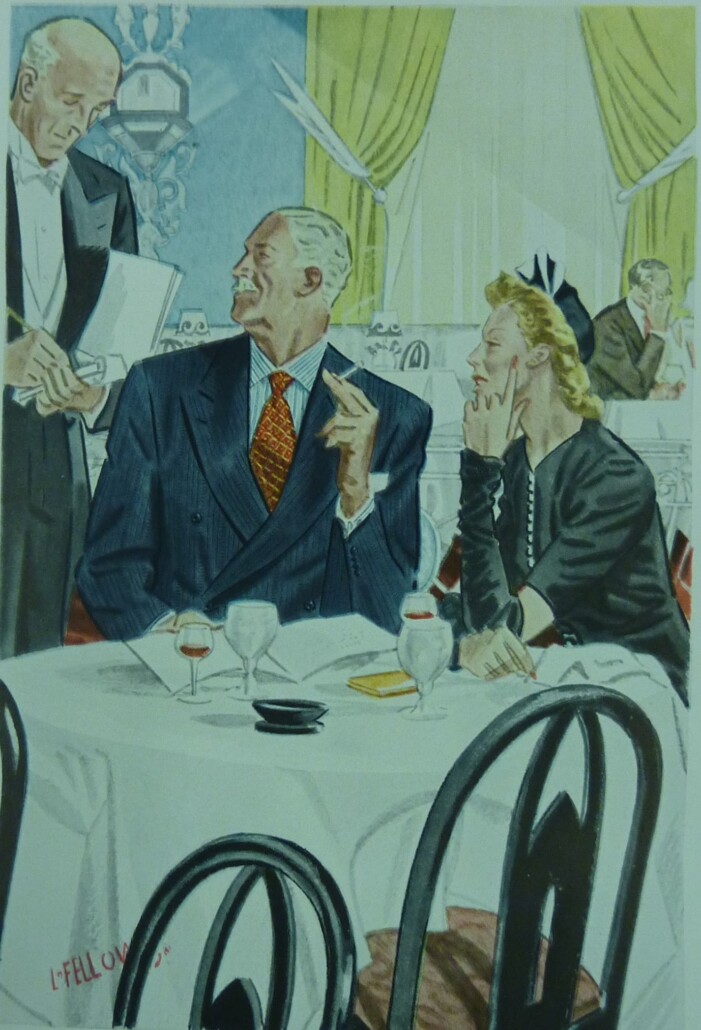
Whether an event is hosted in someone’s home or a venue like a dining hall or restaurant will significantly impact what you can expect of the evening. In most parts of the world, informal social dining on the scale that concerns this article takes place in the home. In East Asia, however, especially in Japan, China, and Taiwan, entertaining is done almost exclusively at restaurants.
Learn how to dine out like a gentleman!
Whether You Can Bring Your Own Guests, Like a Partner or Children
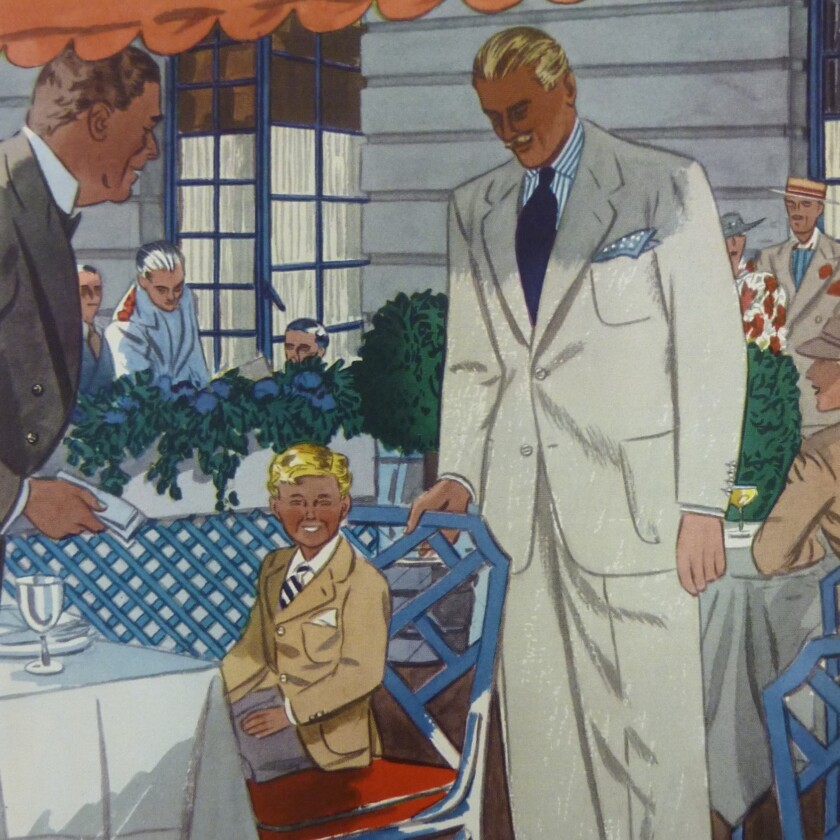
In the case of married couples or committed partners, most invitations will be addressed to both parties and indicate, therefore, that both individuals are invited. When an invitation is individually addressed, do not assume that you are able to bring a guest unless this is explicitly mentioned in the invitation.
Never assume that dependents, like children, are invited to an adult dinner event. Unless children as explicitly invited, it is assumed that your children will not be in attendance. Therefore, employ or secure a babysitter for the entirety of the event. This will make life much easier for you, less complicated for your host, and more pleasant, we strongly suspect, for your children.
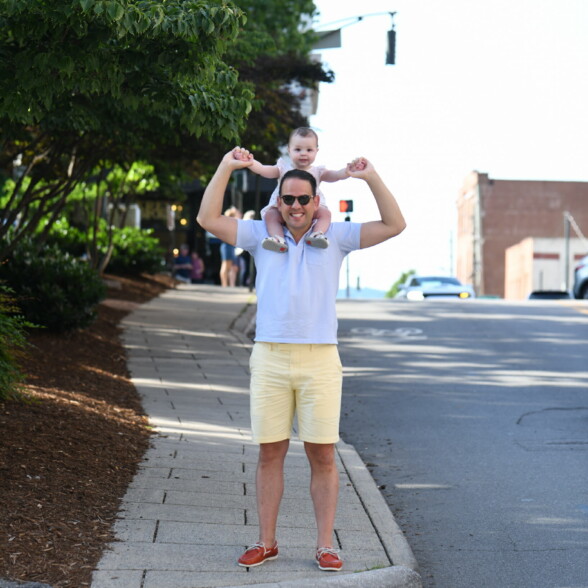
Manners For
Children
If you attend an event at which children are present, and your children are guests, your hosts and other guests will understand that children will not know all of the niceties of fine dining. As a parent, however, you will be expected to have taught your child or children the basics of table manners and to correct them if they are in error.
Anticipated Guest List and Fellow Diners
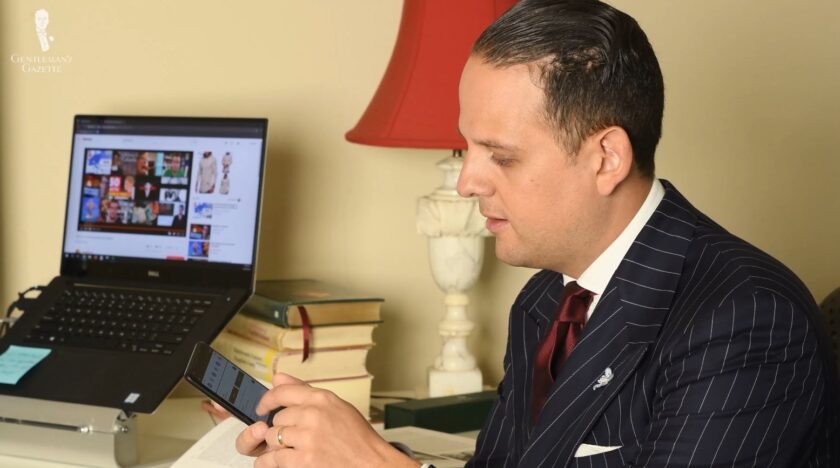
Traditionally, it was possible to theorize on a guest list based on known acquaintances and the social set in which the host and hostess gravitated. Nowadays, it may be impossible to know precisely who will be attending any given occasion.
While it is generally considered rude to ask who else will be attending an event, it is sometimes possible to determine who is expected, especially if you were invited via an online service like Facebook or Evite. Browsing this online guest list will allow you to determine if this is an occasion for friends to get together or if it will be a more business-oriented event. Keep the guest list in mind during the week leading up to the event. Take note of current events of potential interest to the group you can bring up in conversation.
Learn how to converse well with anyone!
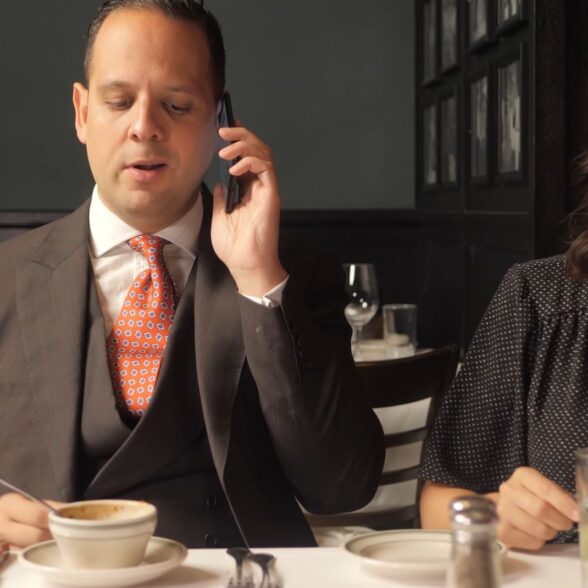
Remember to silence your
Cellphone!
To focus on conversation with your fellow guests, turn off your smartphone off and don’t use it during dinner because that implies you are more interested in your device than in the people around you. If you cannot miss a call, turn your phone on silent and excuse yourself while you take the call in another room.
Essential Table Manners
When it comes to polite conduct, there are, quite literally, libraries worth of books covering all of the minutia and fine details. Fortunately, as regards informal dining, comporting yourself in a polite, respectful way typical of a modern-day gentleman is always an excellent way to start.
From there, if you follow through with the following basic distillation of good conduct, you will be a perfectly admirable dinner guest.

RSVP Promptly, And Explain any Food Restrictions or Concerns.
Letting your host know if you will be attending promptly will make his or her life much easier, as will affording sufficient time to prepare for any special dietary needs you may have.
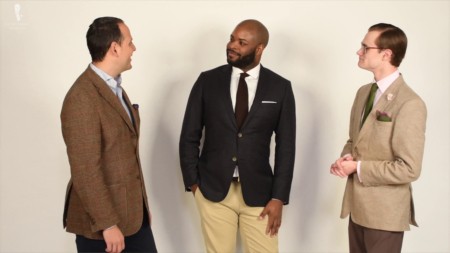
Focus on Others.
During the event, do your best to make others feel included and appreciated, including your host.
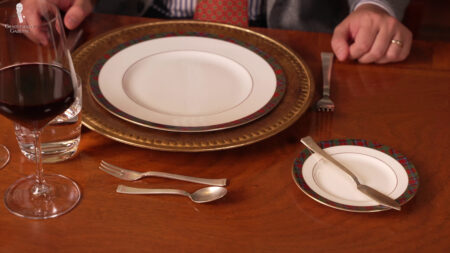
Eat from the Outside In.
Which glassware and flatware to use when eating can be somewhat confusing. Fortunately, you will rarely go wrong moving “from the outside in,” employing the instruments and vessels furthest from your plate at the start of the meal and progressing closer to the plate with each course.
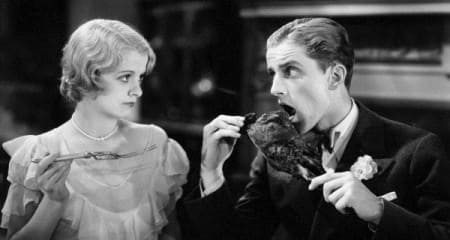
Chew with Your Mouth Closed.
Of all table manners, this one is often the easiest to forget and the most unpleasant for those seated around you.
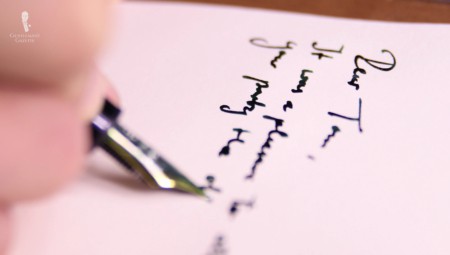
Send a Handwritten "Thank You" Card.
As a complement to your RSVP note, send a “Thank You” card or message after the event to express to your host or hostess what a lovely time you had and to convey your appreciation for their invitation.
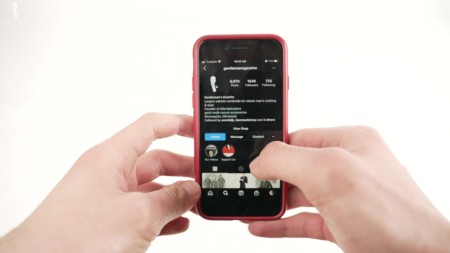
Respect Everyone's Privacy.
If you intend to discuss the occasion in detail or post pictures from it on social media, be sure first to secure the permission of the host and anyone you might mention or depict.
Table Manners FAQ
What is the difference between a formal and informal event?
Informal dining encompasses the overwhelming majority of dining events in which you are likely to partake. It is a catch-all term that simply indicates all dining that is not formal dining, formal dining being a meal served according to exacting standards of conduct for which guests will usually be expected to wear morning dress, Black Tie, or White Tie. Any meal that is not formal is, by definition, informal.
Is informal dining and casual dining the same thing?
No, it is not. Casual dining is a laidback occasion for which you can wear Casual attire. Informal dining is any form of dining entertainment that is not explicitly Formal, as in a Black or White Tie occasion, and can therefore include dress codes that are still relatively formal, like Business Attire or Cocktail Attire.
What does RSVP mean?
This phrase, an initialism of the French “répondez s’il vous plaît,” simply means that your host or hostess expects you to contact them and say whether or not you plan to attend the event to which you have been invited.
How quickly should you respond to an invitation?
Ideally, you should dispatch your reply within 24 hours of receiving the invitation. Unless you have a legitimate cause for delay, your response should certainly be dispatched within 72 hours.
Can I tell my host about allergies or dietary restrictions?
Yes, it is perfectly acceptable to convey this information when accepting an invitation. While your host may or may not be able to accommodate these needs, it is essential that he at least know about them.
What are the essential table manners?
Respond to all invitations promptly, be attentive to others at the event, work your way inwards when employing flatware and glasses, chew with your mouth closed, and send a “Thank You” note to your hosts after the event is over.
When should I start eating at a dinner party?
You should begin eating when your host or hostess instructs you to do so or when your host or hostess begins to eat, whichever comes first.
How do I properly use a napkin?
The napkin should be placed in your lap immediately after being seated. Use it to wipe your mouth and then return it to your lap when not in use. If you leave the table, place the napkin on the seat of your chair or to the left of your plate if there is room. Do not place the napkin on your plate.
Is a napkin the same as a bib?
No, it is not. If your host is serving food that may require a bib, a special cloth that is larger than a napkin will be provided. Table napkins should not be tucked into your shirt front or tied around your neck.
How do I know which forks, spoons, and knives to use?
Fortunately, during informal dining, the rules of which utensils to employ are fairly straightforward. Always eat from the outside in, using, for instance, your salad fork on the outermost left first, then your dinner fork closer to the plate, and so on. When unsure, wait to see what others do, particularly your host. A brief delay won’t be noticed by others but will give you enough time to determine which utensil to use.
What topics should never be discussed at the dinner table?
It is popularly claimed that politics, religion, and vulgarity should never be brought up at the dinner table. In many circumstances, especially if you are with strangers or new acquittances, this mantra remains true.
How do you tell someone else that they have bad table manners?
Unless someone is your dependent, you do not have the right to correct their manners; ultimately, politeness is a matter of personal choice. If you suspect that a close friend might be inadvertently displaying poor manners, politely and discretely broach the subject in private. Do not confront anyone in public about table manners.
Etiquette by Occasion: Informal Dining with No Seating
Even If You Are Standing Up, You Should Still Be Polite!
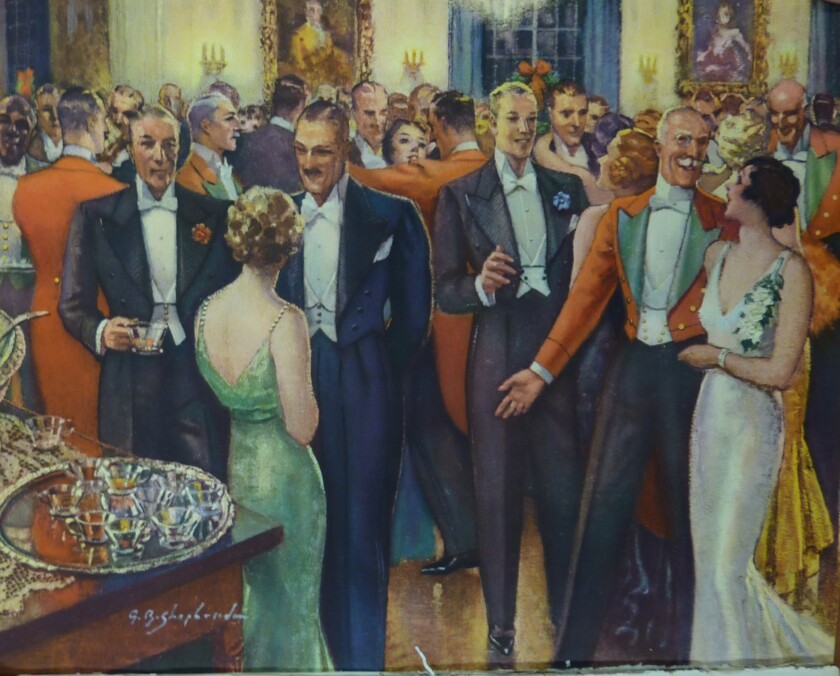
At certain events, especially receptions and larger parties, you may be treated to an informal dining experience at which guests are encouraged to mill around or eat at high-top tables with no particular seating arrangement. While less formal than a seated dinner, these events can still be relatively formal, and a certain amount of decorum will be expected of you.
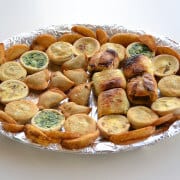
Do Not Expect a Full Meal
At many events without seating, a pared-down menu may be served. While such meals can often be very filling, they will not consist of the volume of food typical at a sit-down supper. The food may also consist entirely of bite-sized delicacies like olives, nuts, small pieces of cheese, meats, crudités, and small desserts.
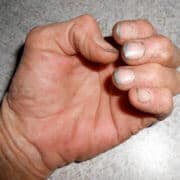
Enjoy Finger Foods Neatly
Just because you are eating with your hands does not mean you cannot be polite! Be sure to keep a napkin handy and use it to clean yourself – never lick or suck on your fingers in public. If utensils or forks are provided, use them even if the food is “finger food:” this will ensure that your hands are not sticky in the event that you need to shake hands with someone or touch others.
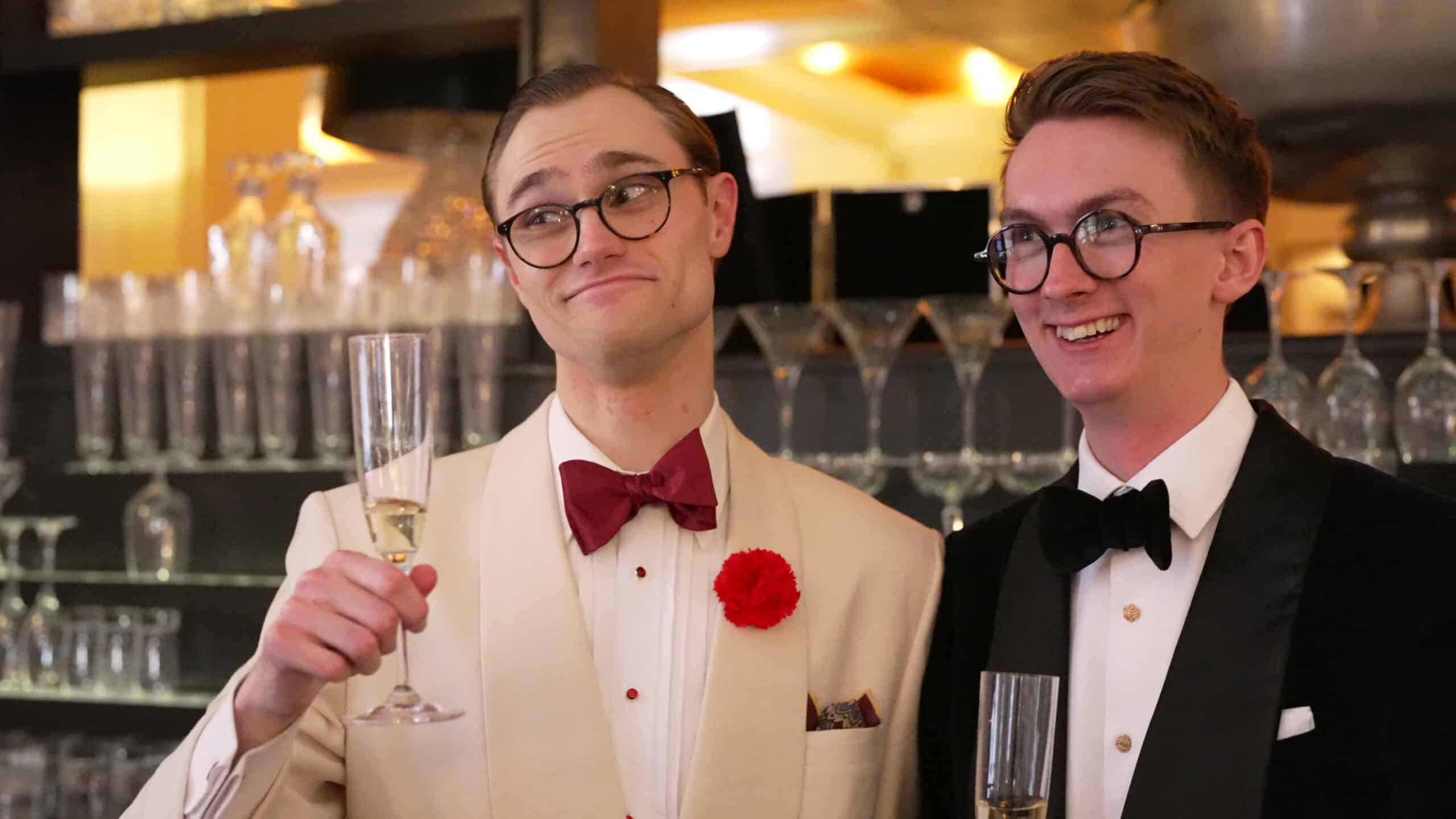
Mix and Mingle
Because you are not seated, you will have many opportunities to circulate and chat with a variety of people at the party. Make light conversation with everyone that you can and try to meet as many new people as possible. While doing so, do not speak excessively loud and give others equal opportunities for conversation.

Departing
While unseated informal events can be very casual, it does not mean that you can duck out when desired. Do not leave early and wait until the event starts to wind down before heading out. Locate your host to give your goodbyes, and be sure to thank him for a pleasant evening.
Etiquette by Occasions: Informal Seated Dining
How to Master the Dinner Party
In many Western countries, the most common informal dining occasion is a dinner party hosted at someone’s private home. These elegant occasions are the perfect opportunity to reminisce with old friends while meeting new ones in the homey confines of a charming dining room.
Of course, in such intimate spaces, good table manners matter more than ever.
How To Be Seated
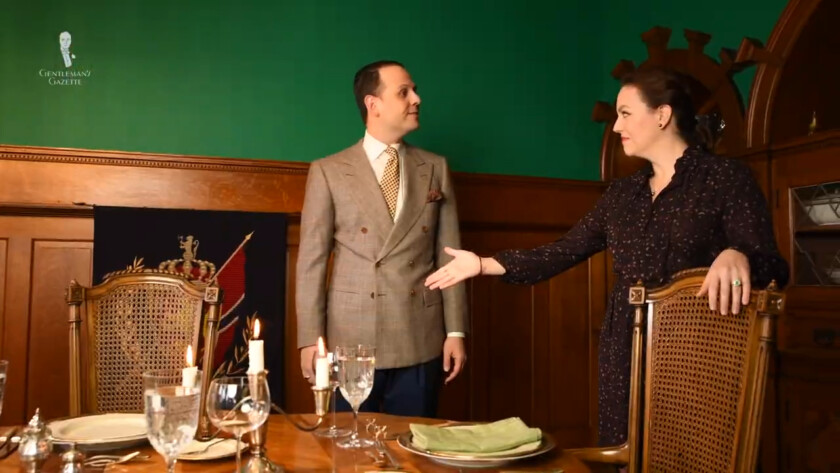
| If Place Cards Are Provided | If Place Cards Are Not Provided |
|---|---|
| Place cards discreetly indicate where your host or hostess intends for you to sit. They are most often employed at events with more than six guests, as this helps to reduce delay and confusion. Your host has likely taken considerable time in planning out who is sitting where, so unless you have a genuinely serious reason for not sitting next to someone, always abide by the place cards. | Just because there are no place cards, it does not give you a license to sit down wherever you wish. Wait for instructions from your host, who will either verbally assign seats or invite those present to select their own spots. Traditionally, spouses and romantic parties do not sit next to each other and should instead mingle with others to help add variety and new interactions to the evening. |
If You Do Not Feel Comfortable Sitting Next to Someone
If you genuinely are unable to sit next to someone for whatever reason, discretely communicate this reality to your host as soon as possible and before it is time to be seated if possible. Your host should then decide where to seat you instead. Obviously, if you are not comfortable being seated next to someone, it is important for you to say so, but remember to do so in a polite, discrete way. Do not draw unnecessary attention to yourself or the situation, as it could potentially become extremely embarrassing for everyone involved.
How Food is Served
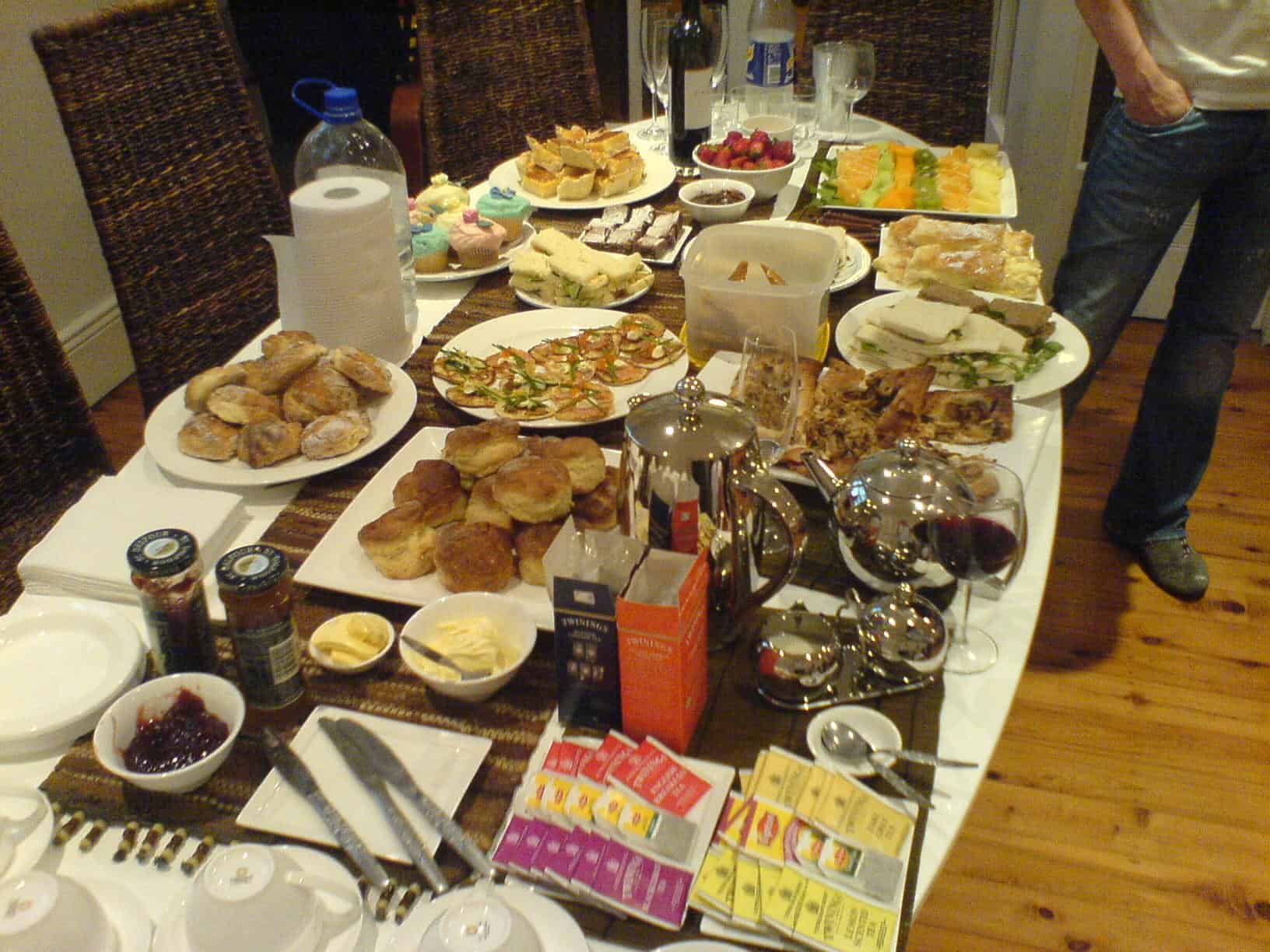
If You Eat Buffet Style
When it is time to begin eating, your host or hostess will invite you to take your plate from your place setting and then carry it to the buffet, where you will pick out your food before returning to your seat with your filled plate.
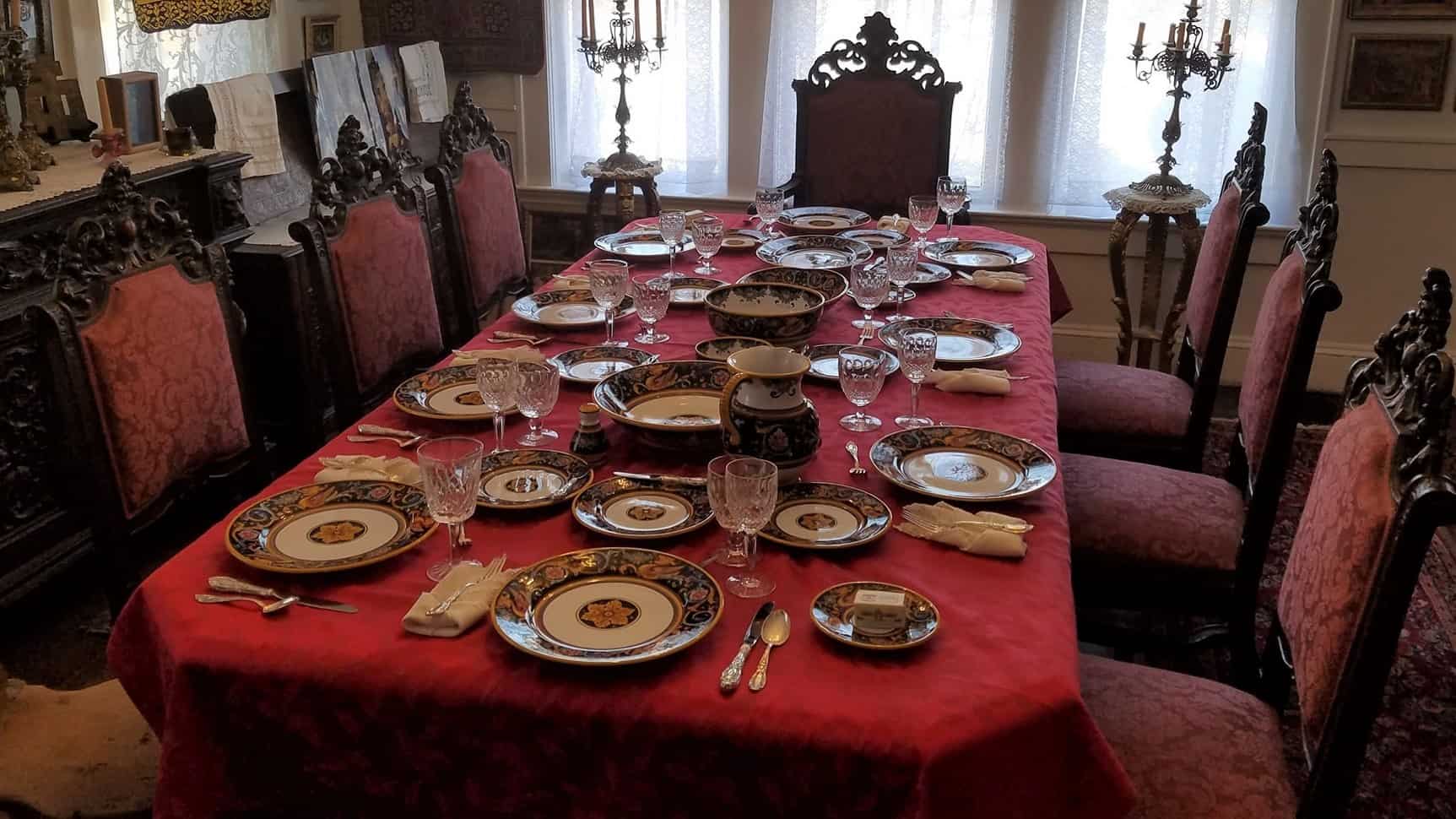
If the Table is Pre-Set or "Family Style"
To save time, your host and hostess might lay food out on the table prior to the commencement of eating. If you happen to be near the kitchen, you may offer, but should never insist, to help lay out the food. Food is then served “family style,” passed around the table between guests.
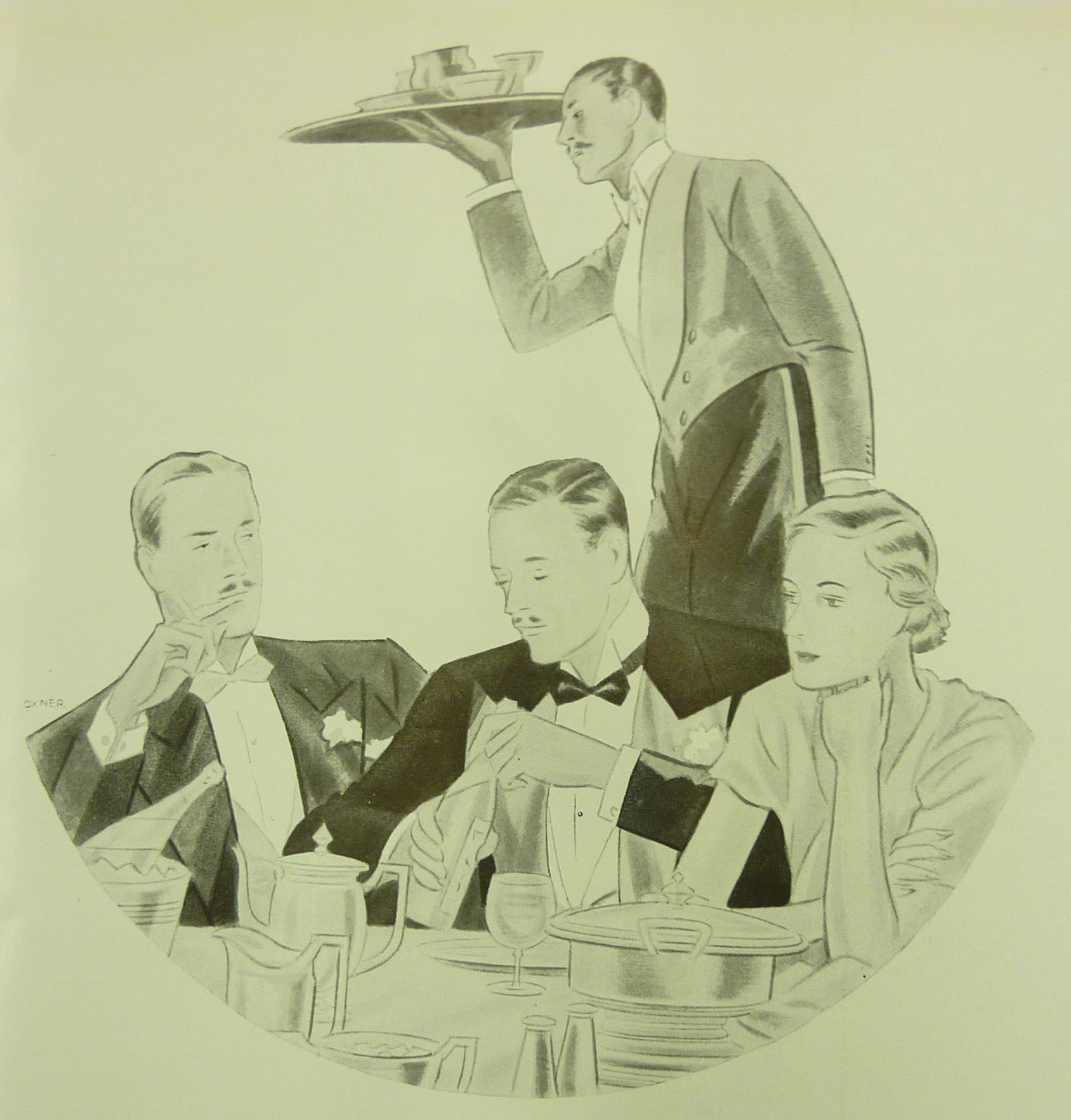
If a Server or Servers are Present
If dining at a restaurant or sometimes at a private home, servers in the form of waiters or domestics may be present. These professionals will handle all of the details of bringing out and serving food, so you only need to avoid getting in their way and discretely ask for anything that you may require.
Recognizing the Signal to Begin Eating
When Your Host or Hostess Begins or Asks You To Begin
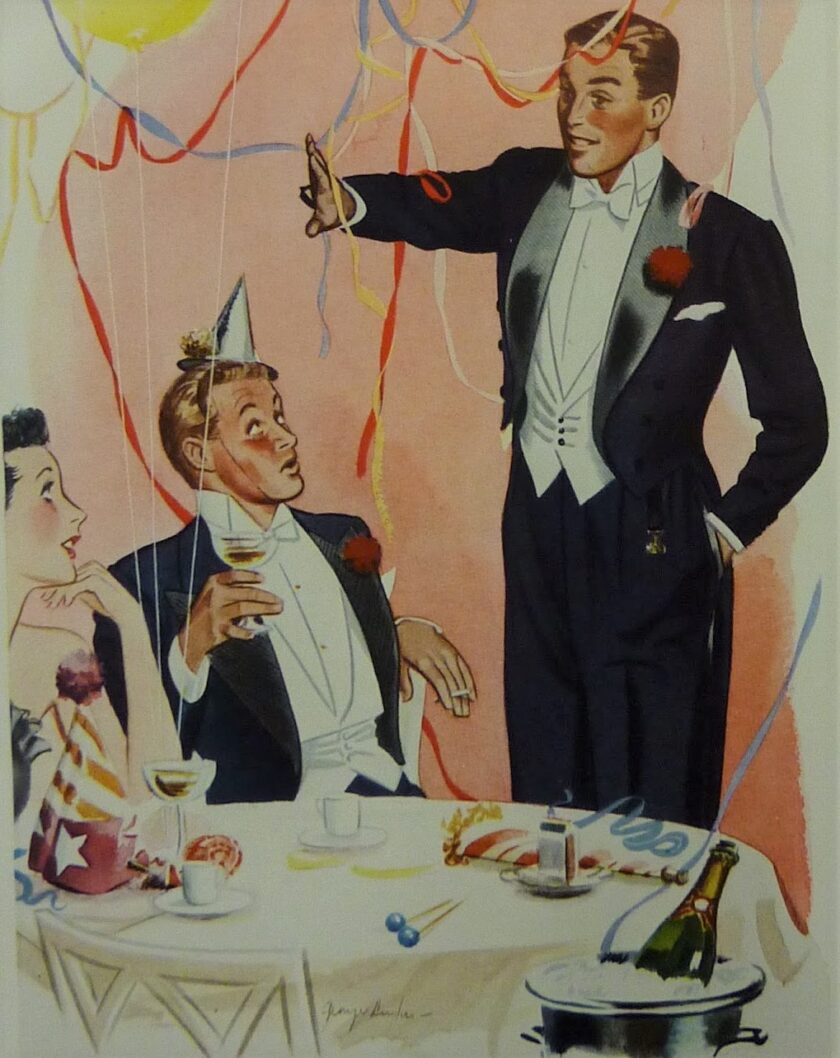
In an informal dinner, eating commences when the hostess picks up her fork unless she has instructed the guests to eat without her. If you are asked to begin eating without your host, you ought to do so: your host wants you to enjoy the food at its correct temperature, and delaying your commencement, while polite, may spoil the taste of the food over which your host has been laboring.

Religious Rituals Prior to eating
If a host chooses to open with a prayer, blessing, or religious ritual, such as the saying of grace, accept the gesture for what it is. The host has gone to considerable expense and time to prepare food that he wants to share with you. At the very least, you can respect his conventions. You may be invited to participate in or lead the ritual: if you are so inclined, you may do so or politely decline if you wish. Do not, however, volunteer yourself to lead the ritual, and do not make a production of refusing.
How to Properly Employ the Napkin
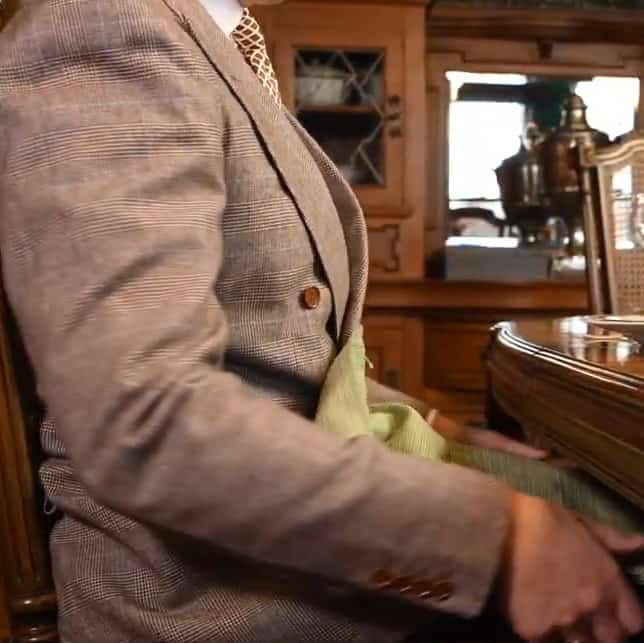
How to Position the Napkin In Your Lap
After sitting down, pick up your napkin and spread it gently over your lap. Do not tuck your napkin into your shirt or tie it around your neck to protect your front. This functionality is typical of a bib, a different kind of article, and a bib will be provided to you if it is required during the evening’s meal.
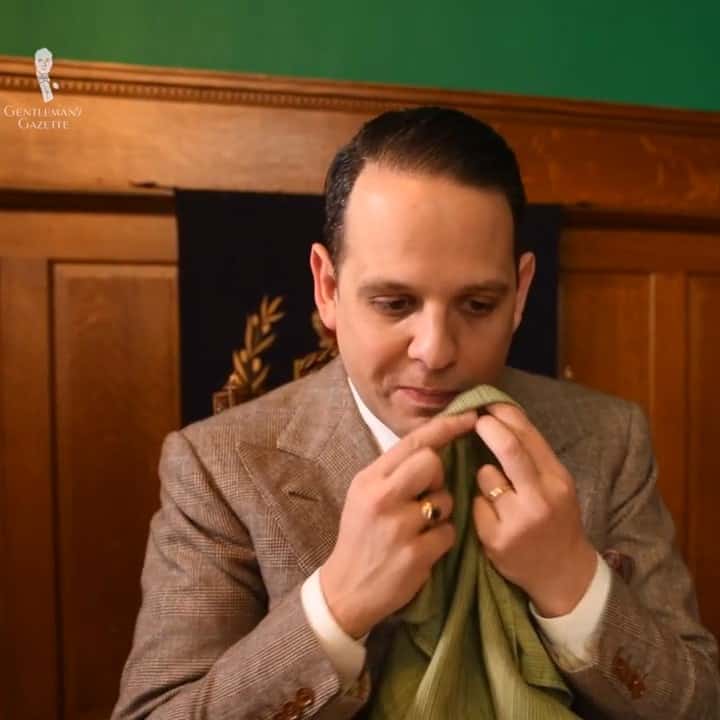
How to Correctly Employ Your Napkin
While your napkin can help catch any food that falls from your flatware, its primary function is to wipe food from your mouth. If you need to wipe your mouth, wrap a section of the napkin around your index finger and remove the offending article. Using a larger portion of the napkin makes it more challenging to use it again if needed.
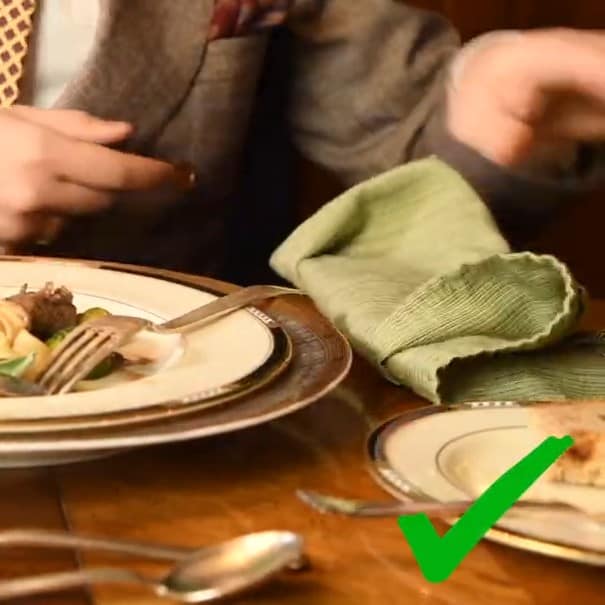
What To Do With Your Napkin When Leaving the Table
If you must leave the table during the meal, place your napkin either on the seat of your chair or place it to the left of your plate if there is room. When leaving the table after the meal is finished, place the napkin gracefully on the table next to the plate. Do not place your napkin on top of or into your plate, as doing so could unnecessarily stain the napkin.
How to Leave the Table During the Meal
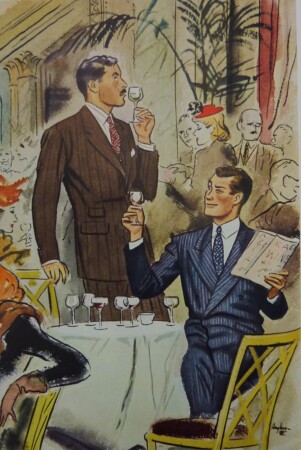
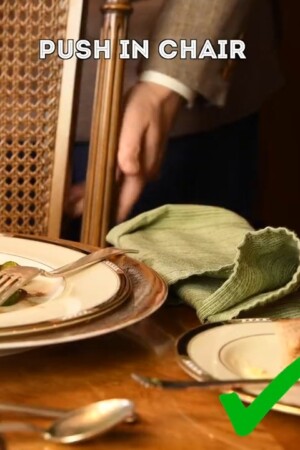
If it becomes necessary for you to leave the table, politely say “excuse me” to your host and to any dinner companion with whom you are speaking.
You do not need to say where you are going – in particular, do not volunteer that you are going to the bathroom.
After rising from your seat, make sure to gently but firmly push your chair back in when you leave the table. This little detail is often overlooked, but carrying it out will set you apart as a particularly well-mannered individual.
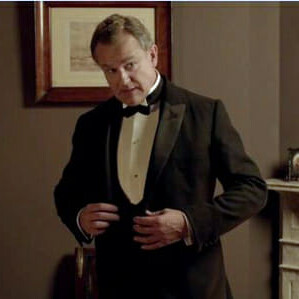
Rising Whenever a
Lady Stands
Historically, and occasionally today as an aspect of formal dining, men at the table would rise as a sign of respect whenever any lady departed or sat down at the table. Nowadays, this honorific is viewed as outmoded and somewhat affected and will often confuse or possibly insult others.
Silverware, Cutlery, Other Utensils, and Proper Utensil Use
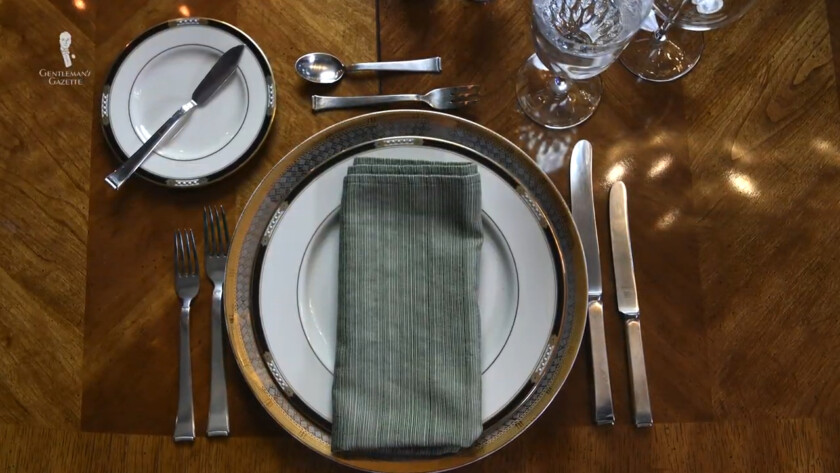
In an informal setting, you may not be confronted with multiple utensils. Your meal may not require more than a single fork and knife. However, even at an informal dinner, your host may place multiple utensils at your place setting.
Regardless of the construction of the place setting, always eat from the outside in. For instance, start with the salad fork that is positioned on the outermost left, farthest from the plate, and once you are finished with it, progress to the dinner fork, which is to the right of the salad fork, and so on.
When unsure, wait to see what others do, particularly your host. A brief delay will not be noticed by others but should give you enough time to determine which utensil to use.
Learn about “American” and “Continental” flatware handling!
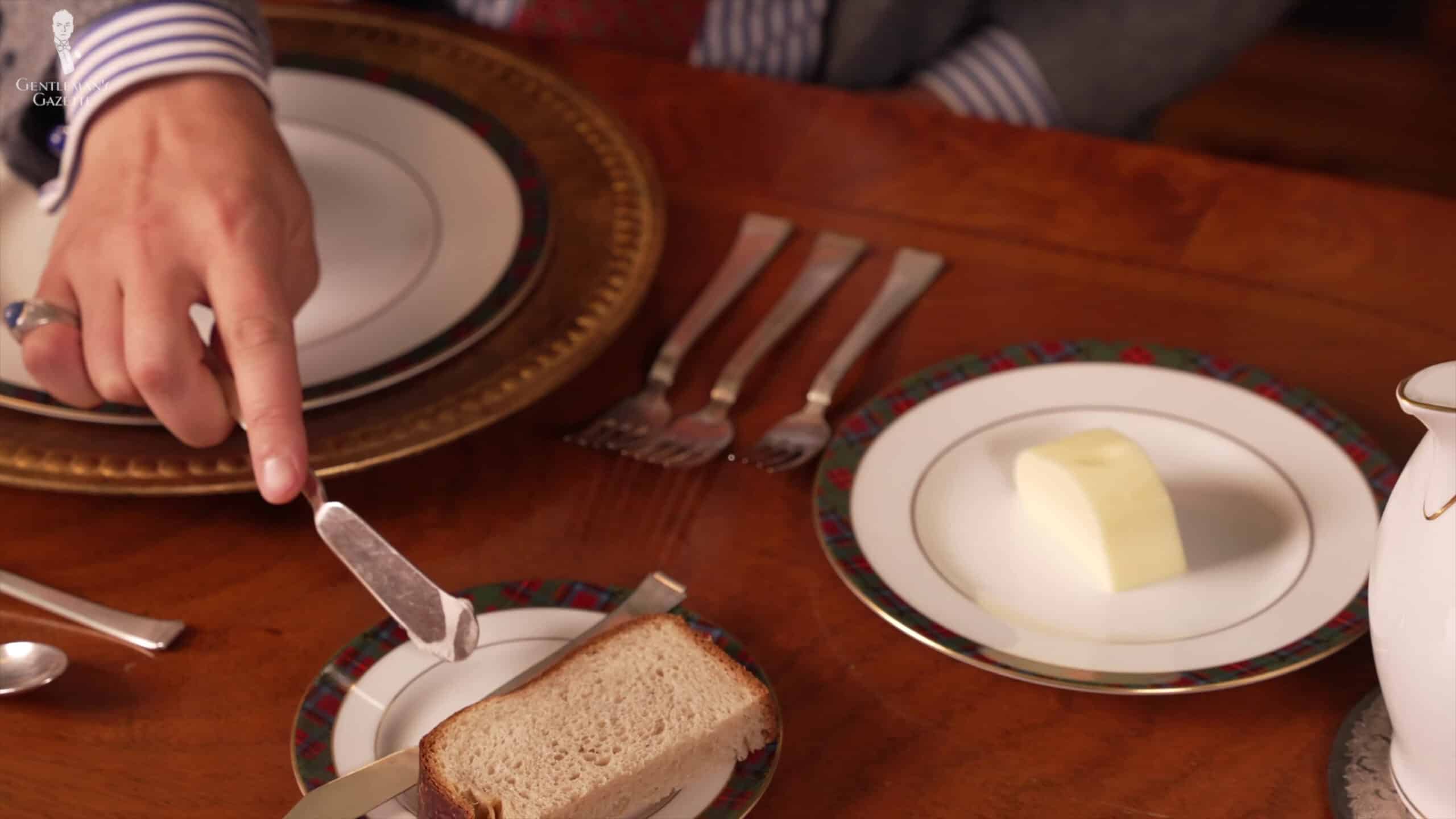
Forks
For an informal dinner, you are likely to be outfitted with a salad fork and a dinner fork. A dessert fork, often used for eating cake, is also common. Specialty forks, like an oyster fork or a fish fork, may be present if called for by the fare of the evening.
In a typical place setting, all forks are positioned to the left of the plate, with the exception of the dessert fork, which appears above the plate, the tines pointed to the right, and some specialty forks, which may appear to the right of the plate. Dessert and specialty forks may also appear alongside the plate itself on the left.
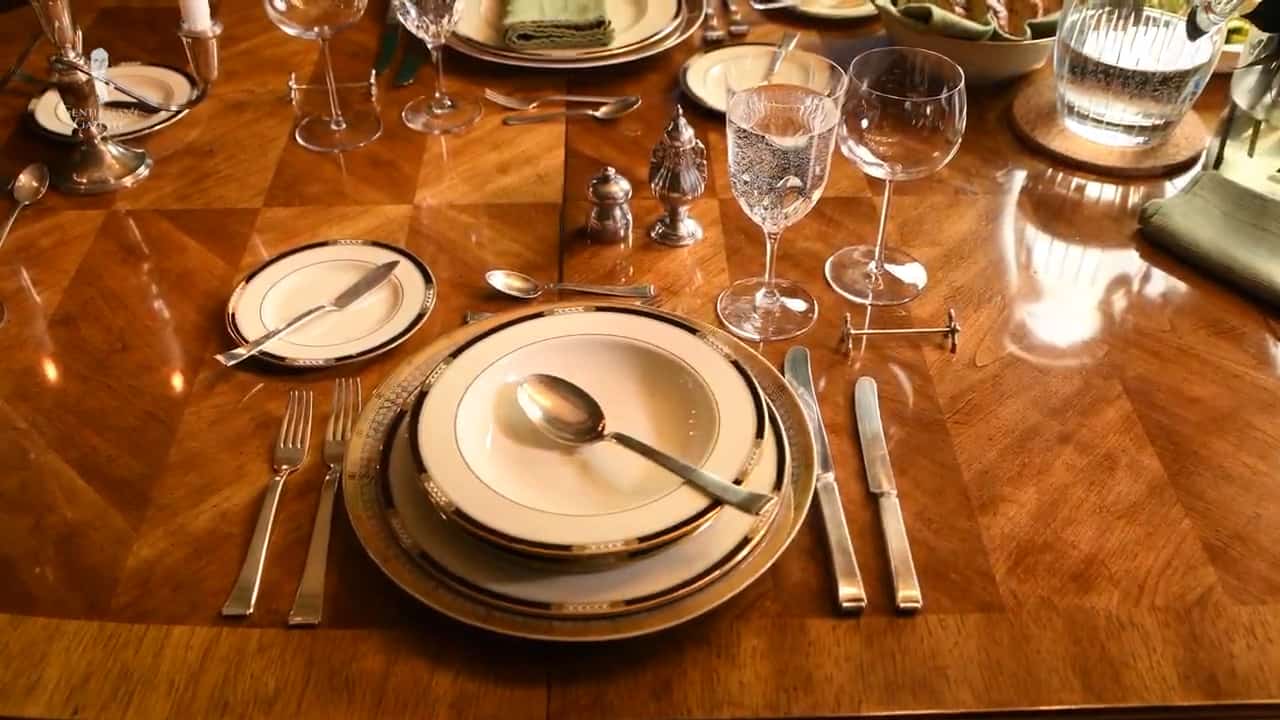
Spoons
If a spoon is present as part of the place settings, it is likely a soup spoon. A dessert spoon may also be present.
Soup spoons are placed to the far right of the plate. Dessert spoons after appear above the plate, with the bowl of the spoon oriented to the left.
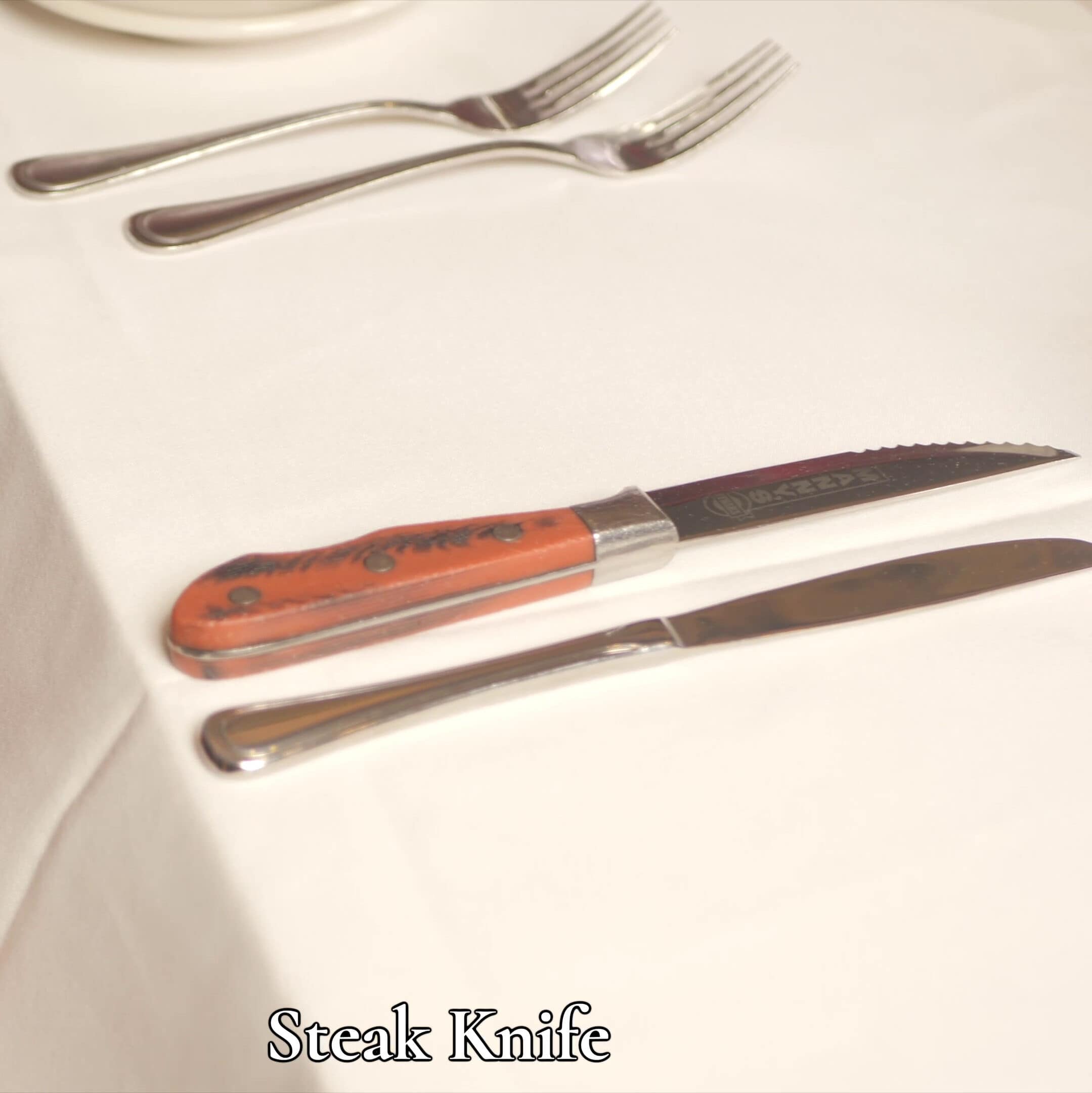
Knives
Knives will be specially selected according to how well they cut each type of food. It is, therefore, common for several knives to be used, and it will be easier for you to cut your food if you employ the proper knives.
The most common knife varieties are salad knives, dinner knives, fish knives, and steak knives. Your host will have these implements arranged in the order you will require them.
Knives are arranged to the right of the plate but to the left of any spoons.
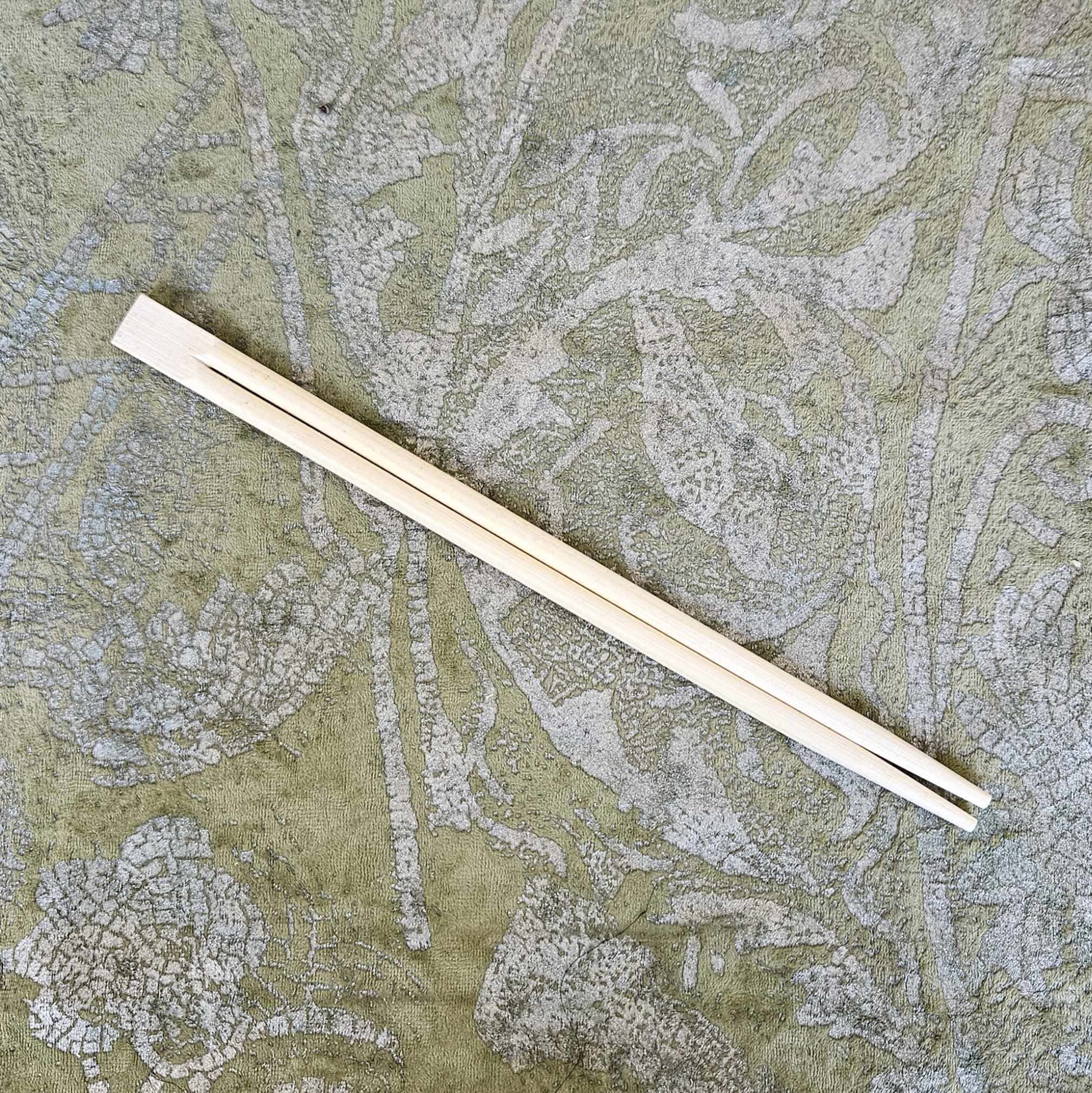
Chopsticks
When Asian fare is served, it is possible that chopsticks will be offered. In a restaurant setting, you can always ask for a knife and fork if you would prefer to use them.
In a private setting, you should endeavor to use the chopsticks as a sign of respect to your host. If you are unable to use them, however, you can also ask for a knife and fork. Consider practicing with chopsticks at home to better acquaint yourself with their use.
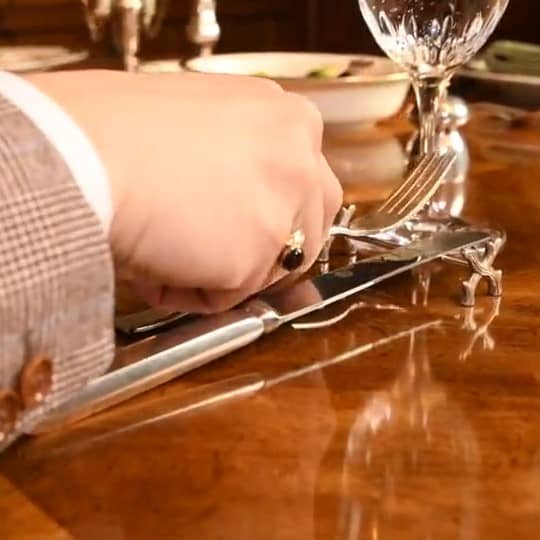
How to properly rest
Your Utensils
If you need to set down your flatware after picking it up, do not place it directly onto the table, as doing so could stain the tablecloth. If there is a knife rest, place your utensils there. Utensils can also be laid on the plate in a triangular formation.
Cutlery Resting Positions by Region
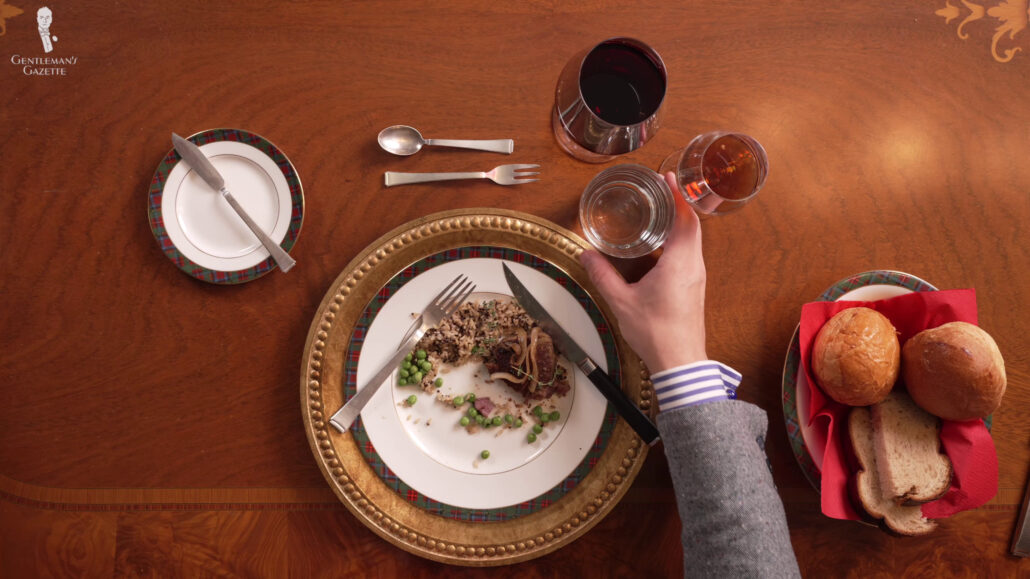
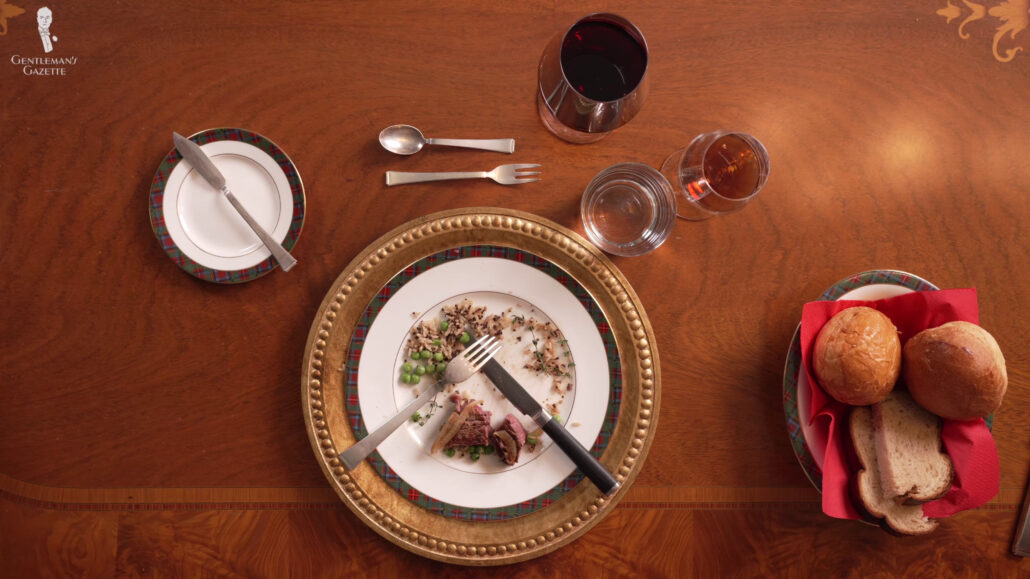
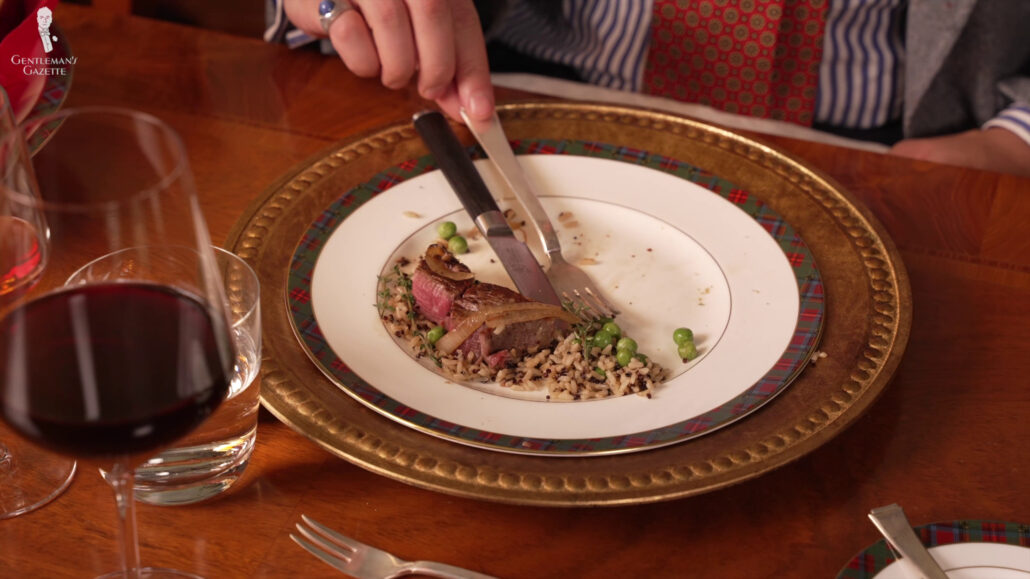
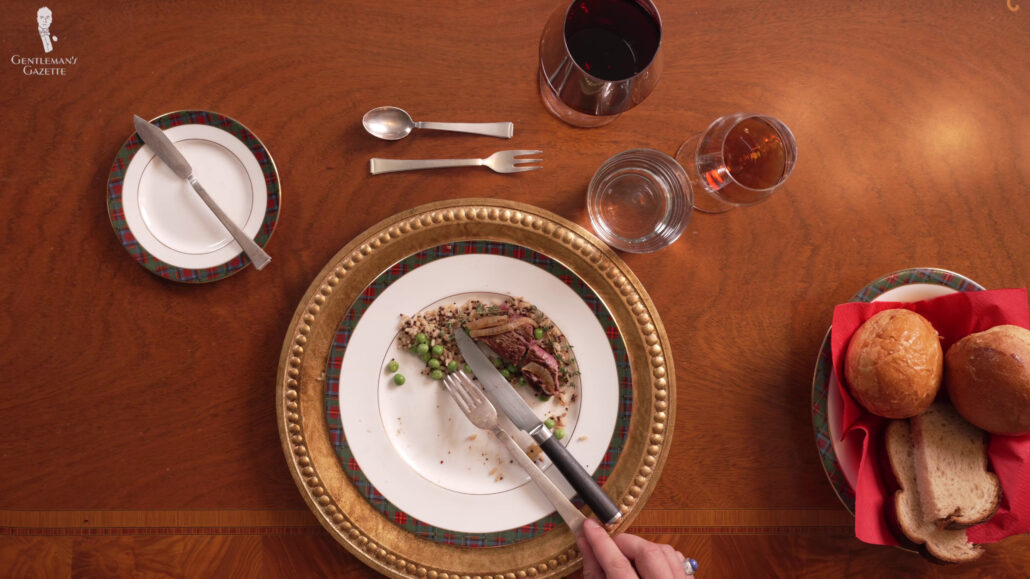
Fast Facts on Utensil Etiquette
• If you drop a utensil on the floor in a restaurant, do not pick it up. Ask your server for a new one.
• If you drop a utensil at a private party, ask the host for a new one and pick up the dirty one from the floor to take to the sink or hand over to your host.
• Do not gesticulate with your utensils because it is considered impolite.
• Do not serve yourself with your personal flatware, use the communal serving utensils.
• Do not “save” your flatware – let it be taken away with each course. Your host has already provided you with all of the utensils that you need to get through the evening.
Glasses: Water Glasses, Wine Glasses, Steins, Oh My!
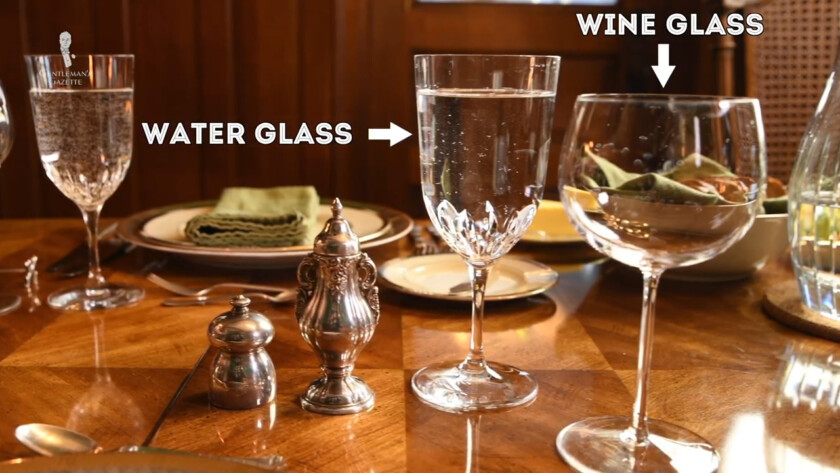
For an informal dinner, you are likely to have one glass that is for water and another glass for an additional beverage. The type of glass will vary based on the beverage enjoyed: a glass or stein for beer, various stemmed glasses for wine, and so forth.
| Water Glasses | Wine Glasses | Beer Glasses |
|---|---|---|
| The water glass is usually positioned next to the upper right quadrant of the plate. It can be refilled from a communal water jug or by the host directly – simply ask for additional water if you require it. You can similarly request more ice. | The type of wine glass employed will vary based on the type of wine drunk. Common varieties include flutes or coupe glasses for effervescent like champagne, shallower, taller wine glasses for white wines, and deeper wine glasses for red wines. Wine glasses are positioned to the right of the water glass. | Like wine glasses, beer glasses vary in appearance based on the type of beer that should be drunk from them. Common beer glass types include pilsner glasses, pint glasses, chalices, steins, tulip glasses, and tankards. Beer and wine are rarely served at the same time, so the beer glass goes where the wine glass would go. |
Proper Wine Etiquette
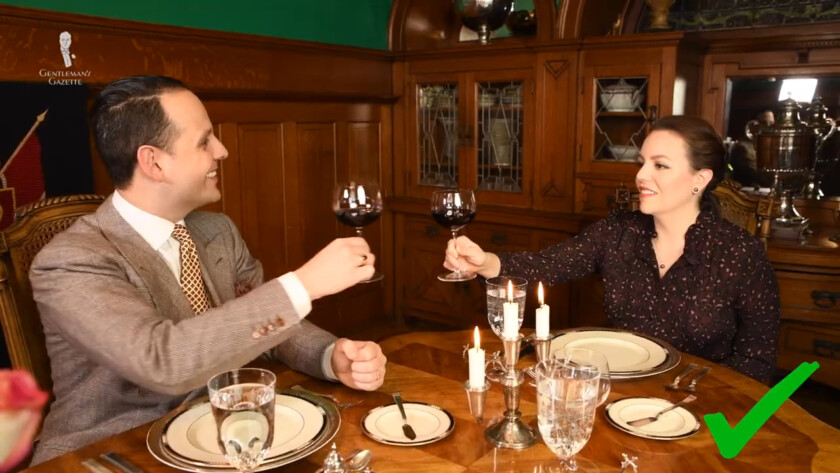
“’Here are the drinks,’ the Colonel said. ‘Remember not to say, chin-chin.’
‘I remember that from before. I never say chin-chin, nor here’s to you, nor bottoms up.’
‘We just raise the glass to each other and, if you wish, we can touch the edges.’”
From Across the River and Into the Trees by Ernest Hemmingway
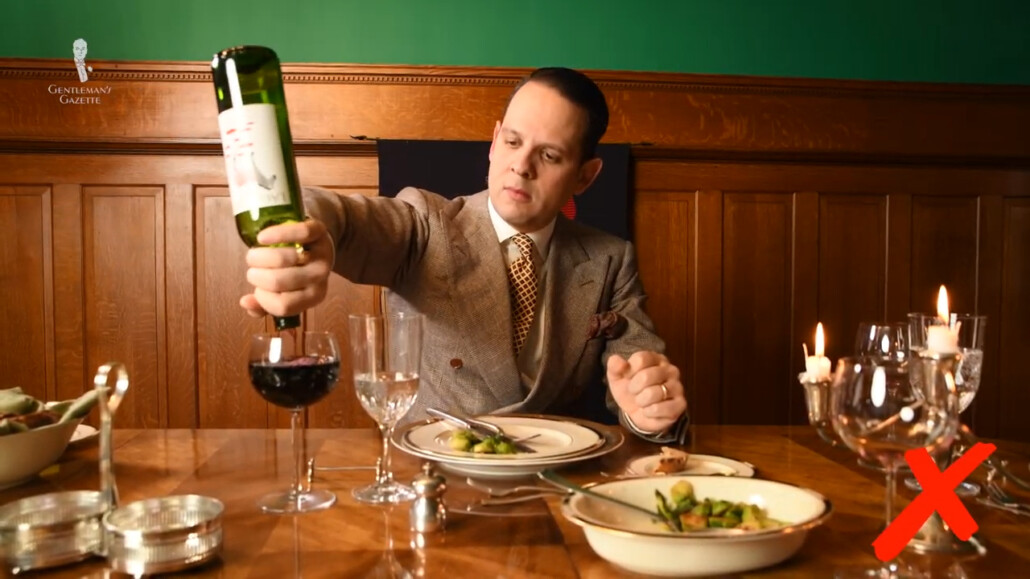
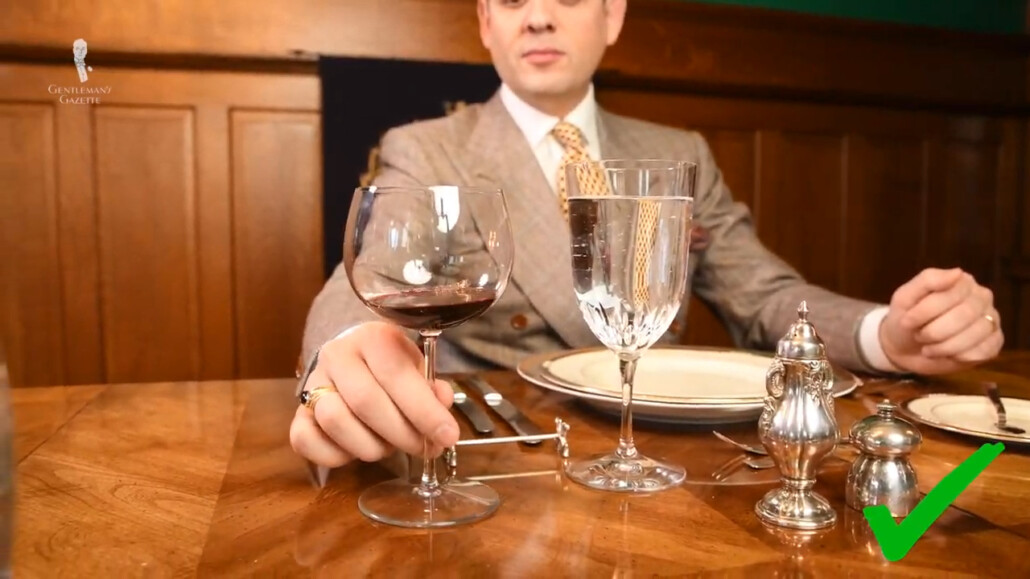
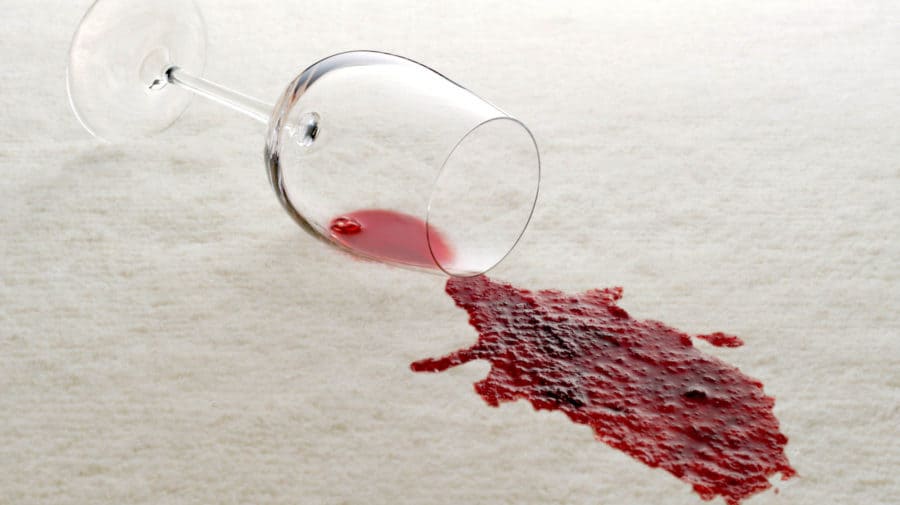


Bringing your own
Wine
Many people, especially wine enthusiasts, like to bring bottles of wine as a hostess gift. If you are eager to share your wine on a particular occasion, contact the host well in advance of the event to ask permission. This will allow you to ensure that your desired wine is a good complement to the food that will be served.
Drinking Is Your Choice and Your Responsibility
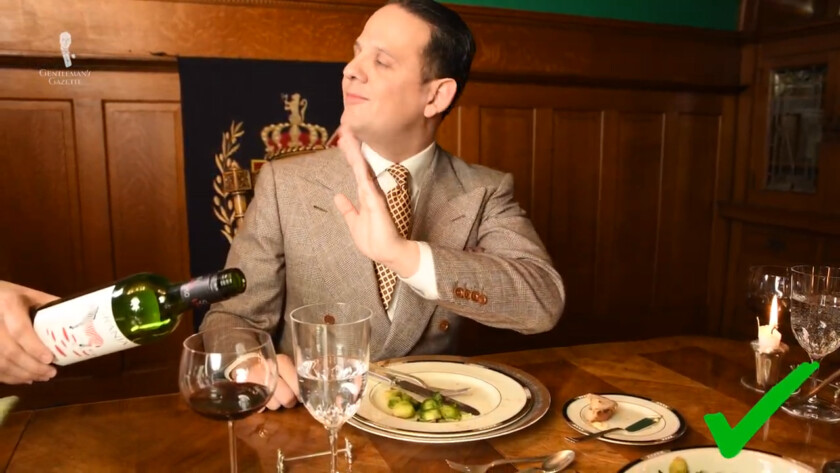
If you do not drink, politely refuse the offer of alcohol: no further explanation is required.
Dining is a social event with food and wine, but you know your limits best, so say no thank you when you had enough. Even if you have displayed the best table manners throughout the evening being tipsy or even drunk will ruin everything.
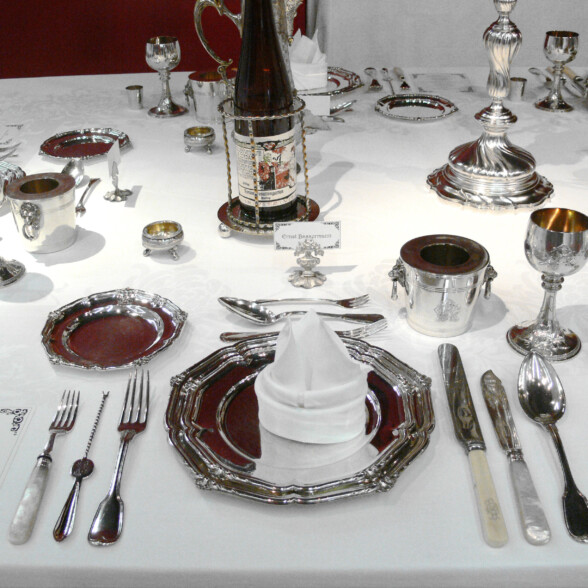
Just Remember!
Eat to the left, drink to the Right
On a crowded table, it is possible to confuse your glasses and plates with those of others. To keep things straight, remember the phrase “East to the left, drink to the right.” Any plate to the left and above your main plate is part of your place setting, as is any glass to the right.
Passing Dishes and Correct Serving
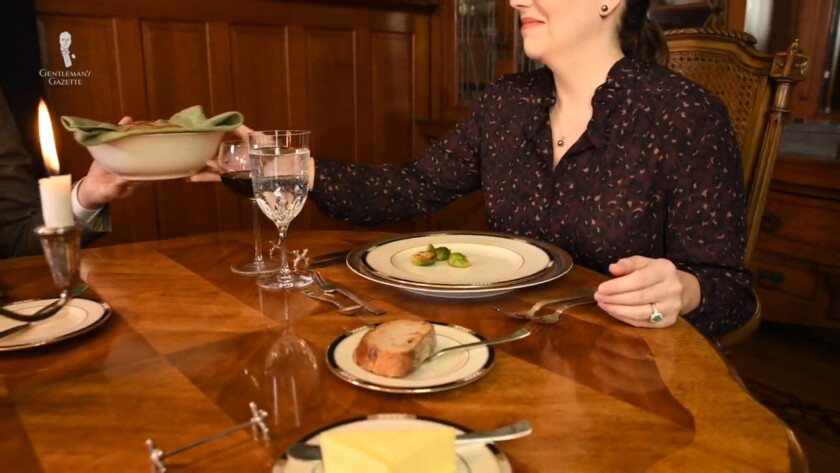
If servers are not present, it is likely that you and your fellow dinner guests will need to pass items between yourselves. Understanding the conventions of how to ask for and pass along each type of foodstuff or condiment will help everything progress much more smoothly.
The Steps to Properly Passing and Serving Food
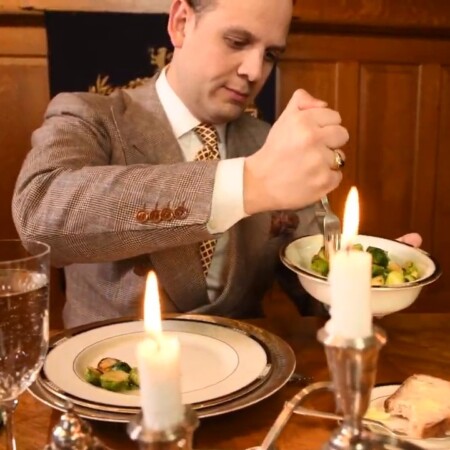
Don't Help Yourself When Passing a Dish
Remember that if you are asked to pass along anything, do not partake of it yourself first. Pass it to the person who requested it, and then ask for it to serve yourself then.
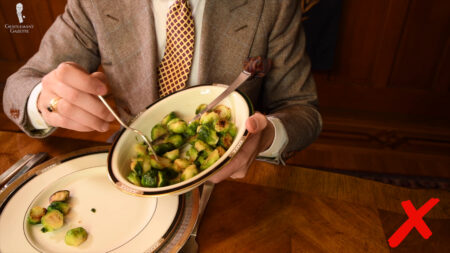
Don't Serve Yourself with Your Own Flatware
Always scoop food, using the proper utensil, away from you. Do not use one of your own utensils.
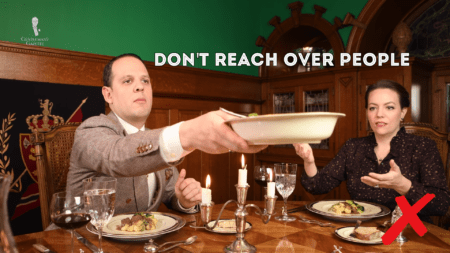
Don't Reach, Ask For Dishes To Be Handed To You
Do not stretch across the table, crossing other guests, to reach food or condiments. Instead, ask for them to be passed to you, and as you pass them, do so from left to right.
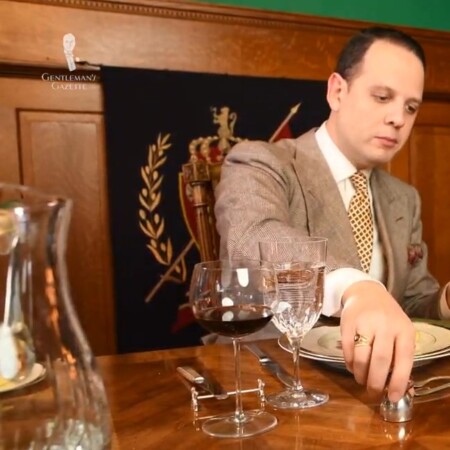
Pass Paired Condiments Together
If passing paired condiments, like salt and pepper, pass both shakers together, even if only one was requested. Whenever dealing with paired items, always pass them both to ensure that they do not become orphaned.
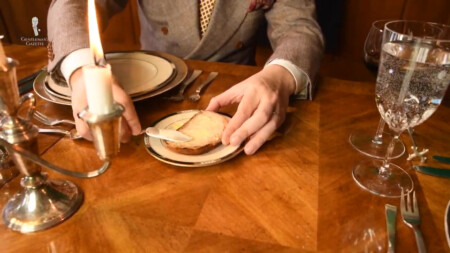
Never "Double Dip"
Butter spreads or dips should be transferred from the serving dish to your plate before spreading or eating. This practice ensures that dirty utensils are not reintroduced into a communal condiment, a practice colloquially known as “double-dipping.”
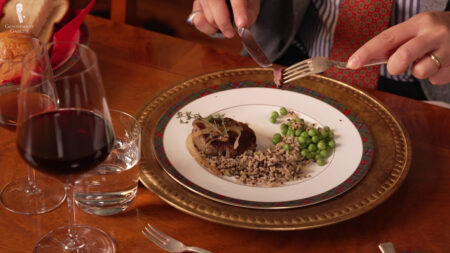
Wait for Others Before Eating
Do not immediately dig into your food. Make sure everyone has had the opportunity to be passed every serving plate and has their dinner selection on their plate.
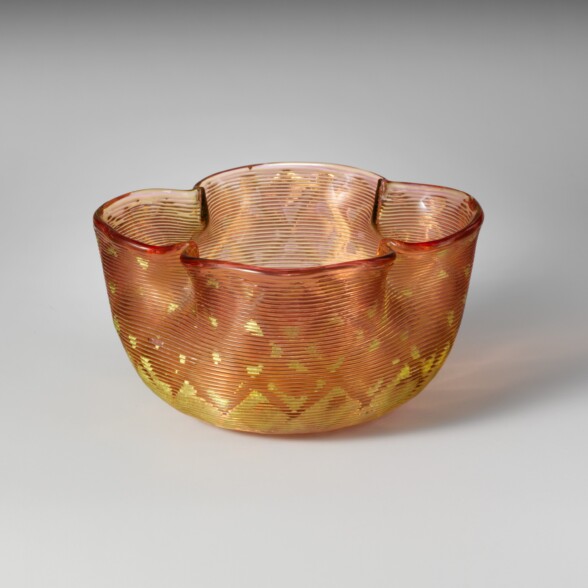
What is a
Finger Bowl?
A finger bowl is a small, shallow dish of clean water. You can dip your fingers into it to wet the tips so that you can remove stickiness or slight stains left over from anything that you have been eating with your hands. This movement should be discrete and unobtrusive – you are not expected to wash or scrub your hands with this water.
How to Eat Properly While at Table
Etiquette When Preparing to Eat Your Food
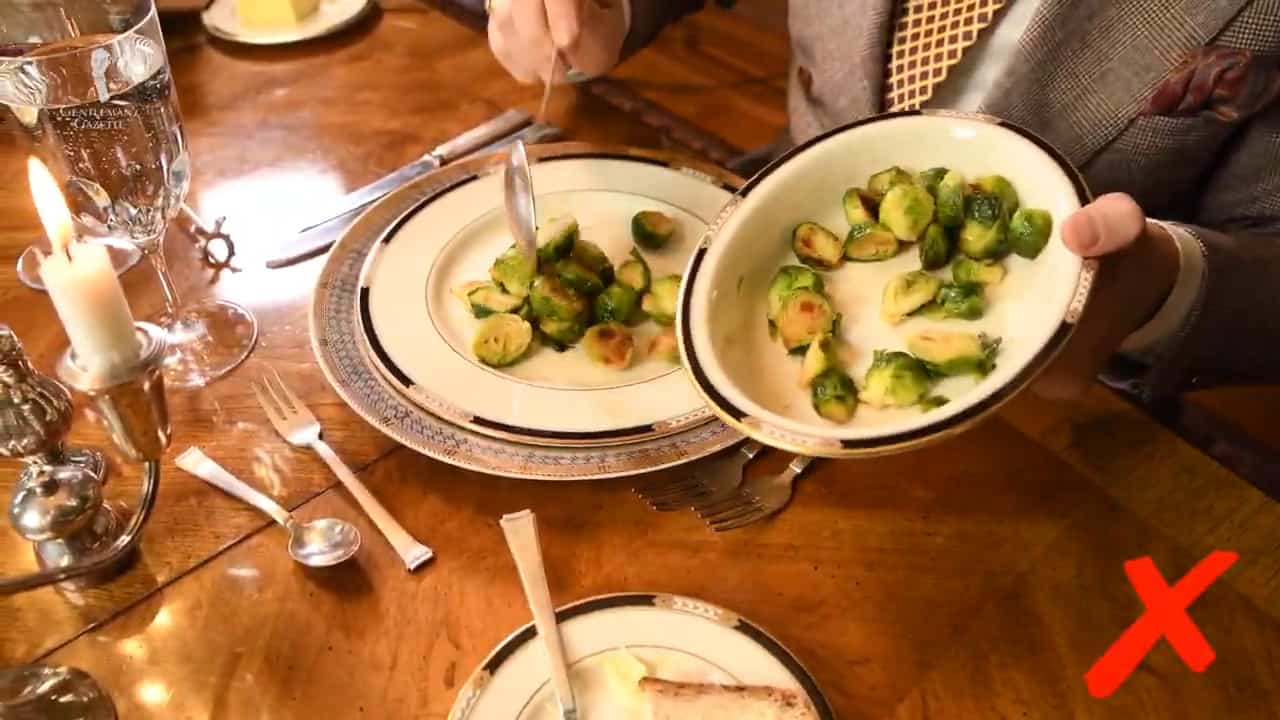
Reasonable Portion Sizes
When serving yourself, take a small to moderate portion size. This will ensure that a sufficient amount remains for everyone else – you can always come back for more later, but no one will appreciate you attempting to scoop food from your plate back into the serving dish!
Also, in case something does not agree with you, it will not appear as though you are wasting the food if you decide not to finish eating a smaller portion.

Eat As Much of What You Can
Unless you suffer from an allergy or dietary restriction, you should always at least try anything that is offered to you when eating at someone’s home. If the food is not to your likely, do not eat more of it, but do not draw attention to this fact.
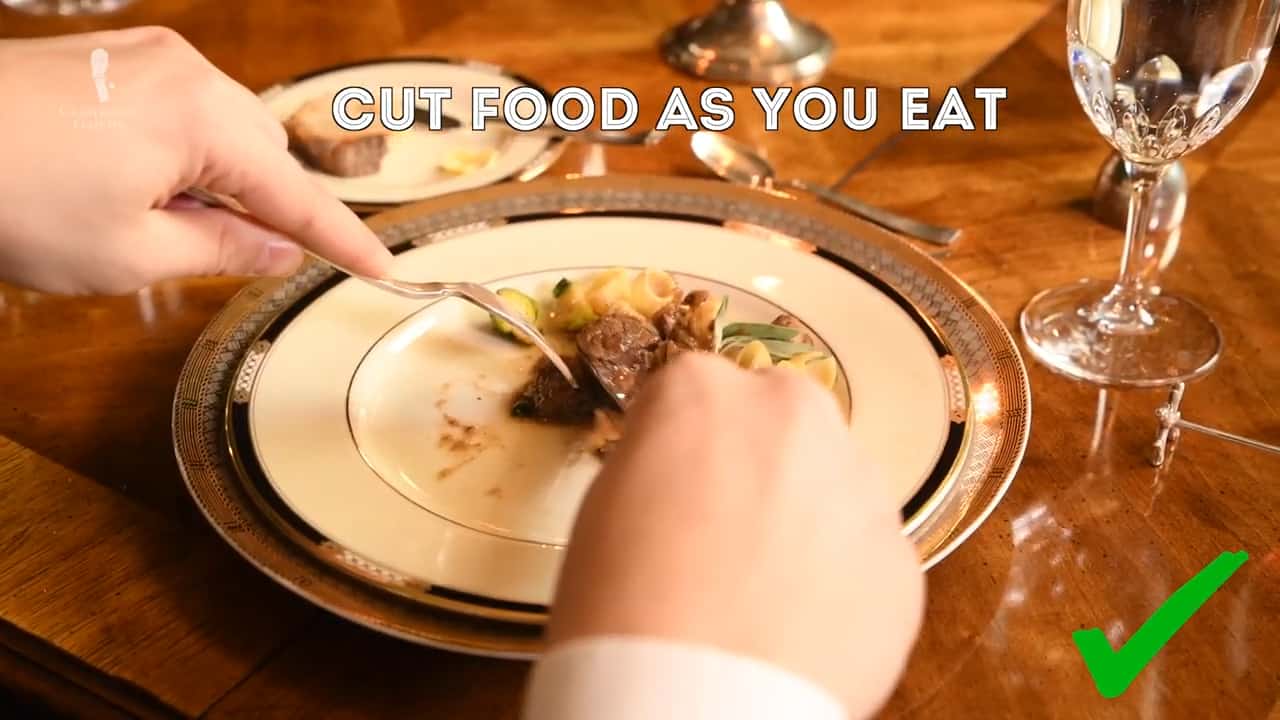
Cut Your Food As You Eat
Food, in general, and meat, in particular, should be cut up into bite-sized pieces as they are eaten. Only meals for children are cut entirely all at once. Ensure you use both your fork and your knife when cutting to adequately control the food as you slice it.
You can employ either the American style of eating, in which you switch which hand holds the fork and the knife based on whether you are cutting or eating, or the Continental style, in which the knife is always held in the dominant hand and the fork in the non-dominant.
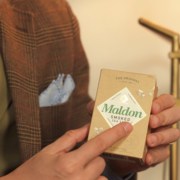
Season Food Only After Trying It
Resist the urge to immediately season your food with salt or pepper, even if that is how you usually take your meals. You should always assume, to honor your host’s culinary efforts, that the food was correctly seasoned when it was prepared.
After tasting, if you do decide to add salt, pepper, or similar seasonings, do so discretely and moderately. If you over-season your food, you will have no one but yourself to blame.
Politely Sized Small Bites and Proper Chewing: The Polite Way to Eat
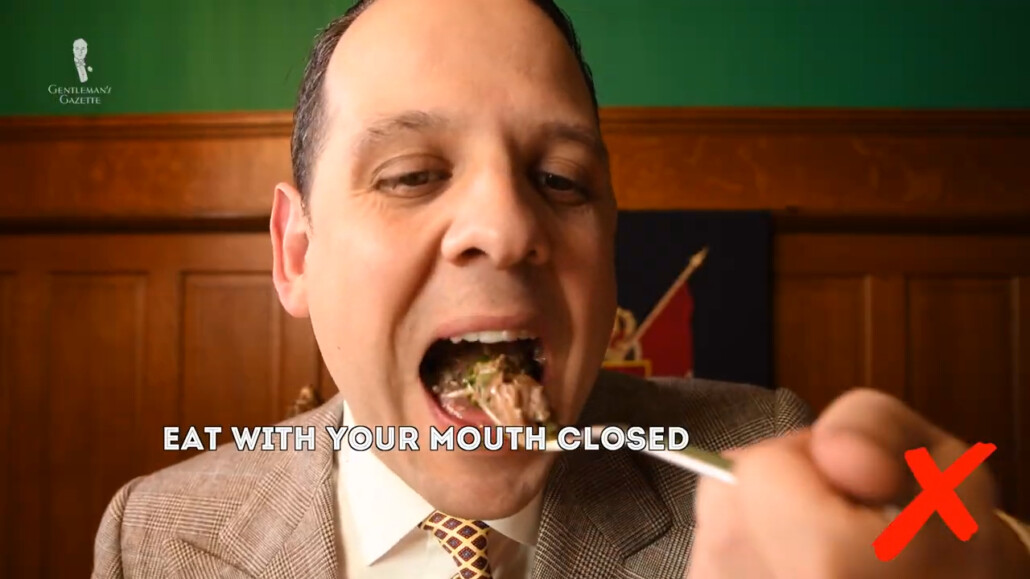
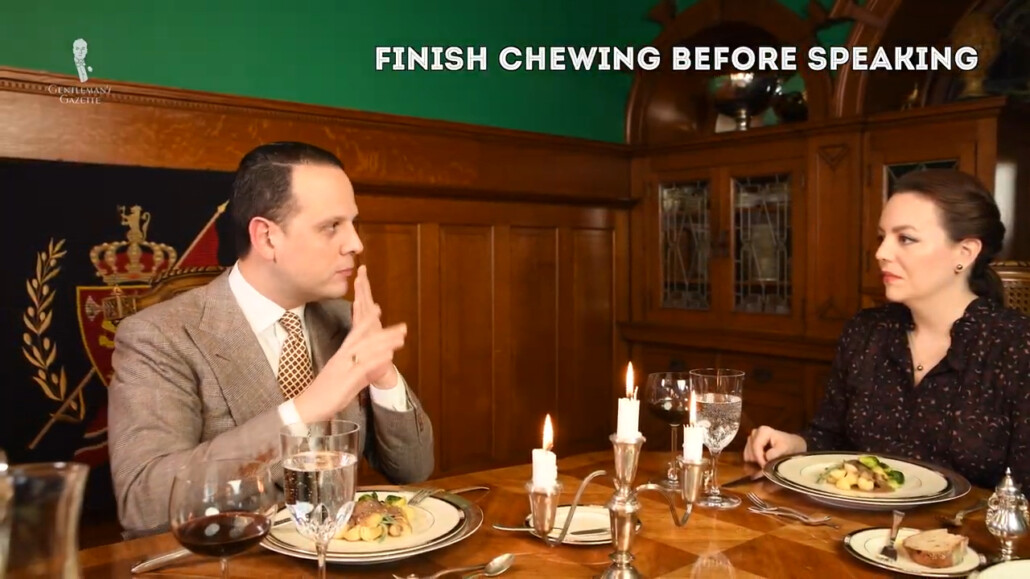
“Put not another bit into your mouth till the former be swallowed. Let not your morsels be too big for the jowls.”
George Washington
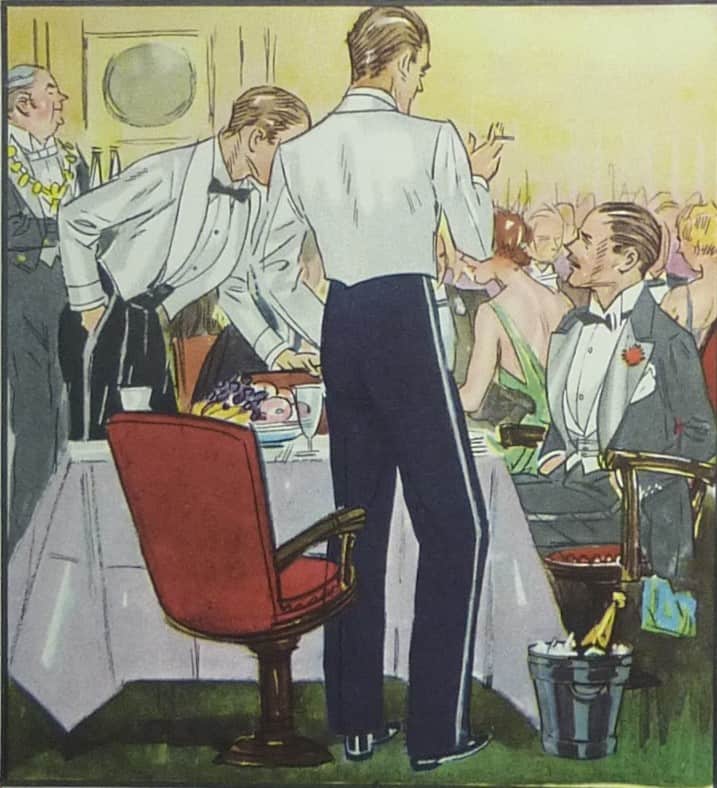
Remember, an informal dinner is a social event with food. Your focus is always on others, not the food. Wait for your host to begin before you start eating, and moderate your eating pace throughout the evening. Do not rush through your meal, but also do not take too long to finish your food.
Correct Posture At the Dinner Table
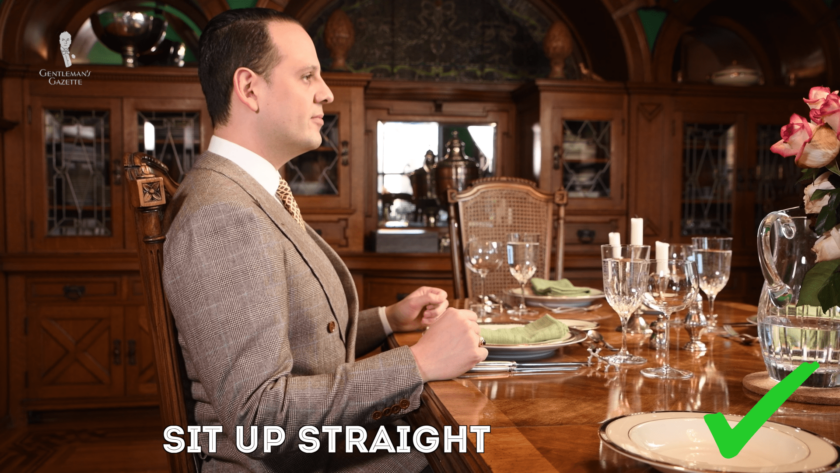
When seated, your back should be straight, and your arms at your sides or comfortably in front of you as you eat or drink. Do not hunch over your plate or lean excessively forward.
How to Properly Eat with Your Hands
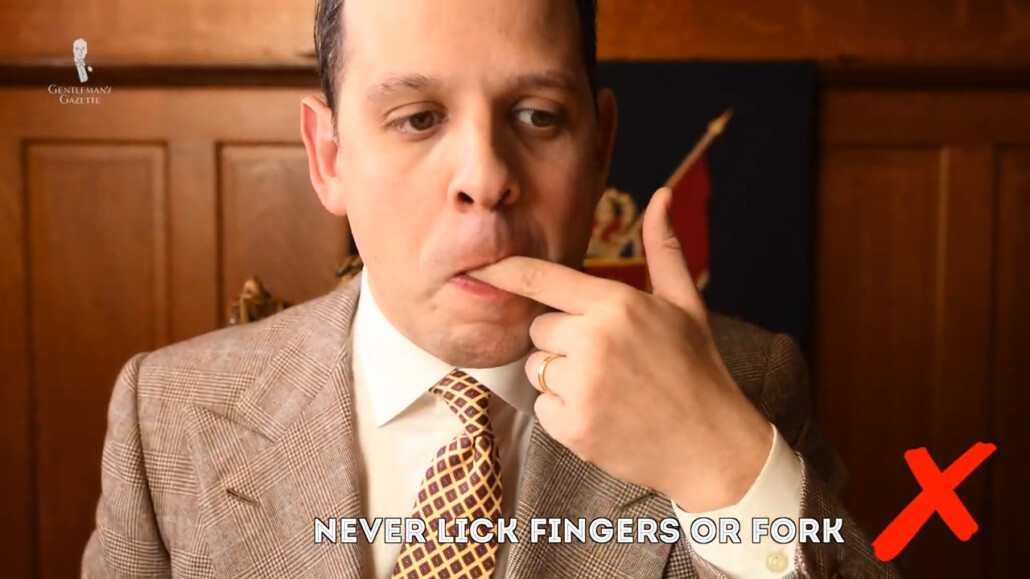
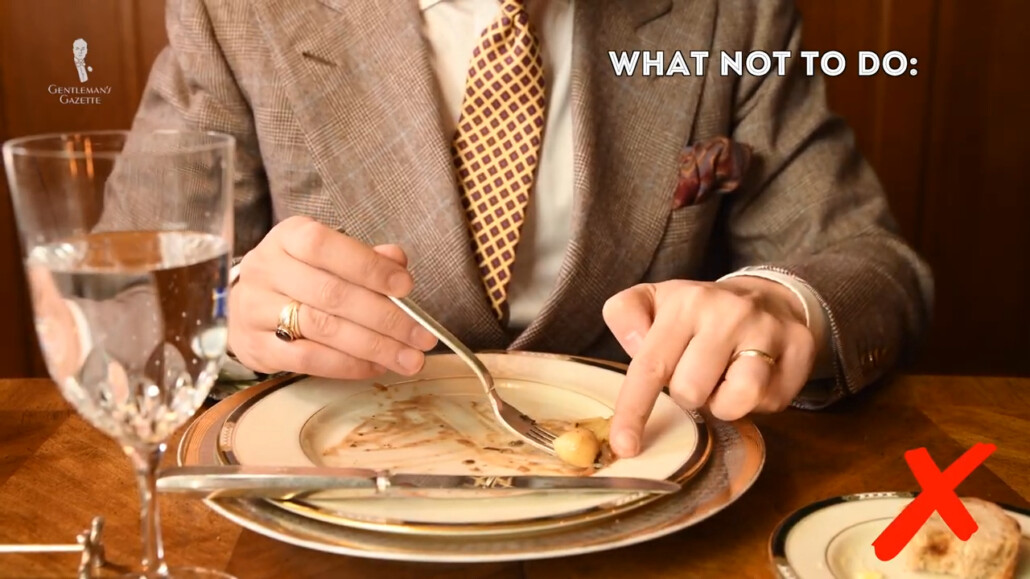
Unless you are consuming food that is traditionally eaten with one’s hands or are dining with people who usually eat with their hands, you should never move food around on your plate with your hands. In our experience, even foods that are often eaten with one’s hands, especially in North America – messy burgers, pizzas, and the like – are much neater when consumed, at least partially, with the aid of a knife and fork.
“When I was in Paris, I watched a very chic woman eat an entire multi-layered club sandwich with a fork and knife. Once done, she departed with an equally elegant male companion and did not need to wash her hands. After that I experience, I learned to eat everything with a fork and knife. No matter how finger-friendly the meal is, it pays to be able to eat it with silverware.”
Raphael Schneider
How To Eat Bread the Proper Way at Mealtime
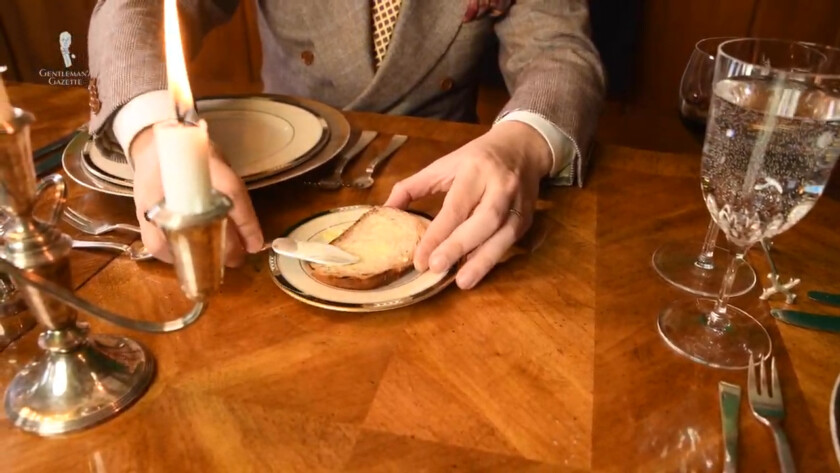
If you are dining in a country where bread is buttered before being eaten, first place a slab of butter onto your butter plate using your butter knife. In America, the entire piece of bread is buttered at once. In most of Europe, the bread is torn into pieces and each piece is buttered before being eaten.
Otherwise, in countries like France, where bread is not buttered, tear it into small pieces and use the bread to sop up the lovely sauce your host has prepared.
Avoid Distracting Noises
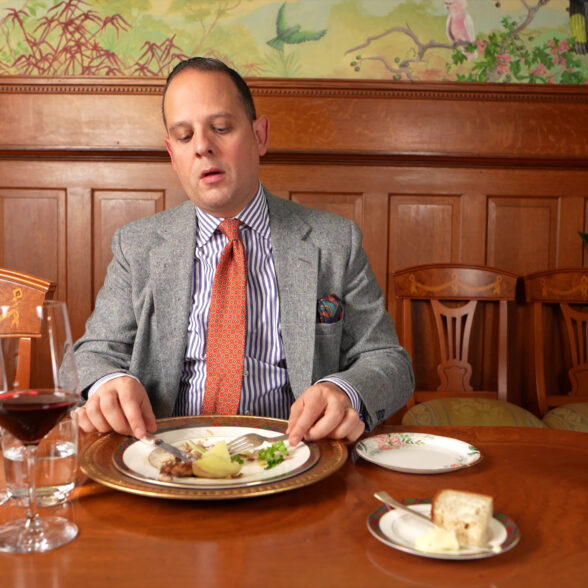
How to deal with distracting
Noises
Slurping, burping, and moaning, no matter how good the food tastes, are all considered very rude at table in the West, although they can be taken as compliments in other cultures. In general, avoid all loud and distracting noises, especially on more sedate and formal occasions. If you need to cough, cover your mouth fully with your napkin. If you need to cough excessively, or perform other bodily functions like blowing your nose, excuse yourself and do it in the bathroom.
Do not use a toothpick at the table
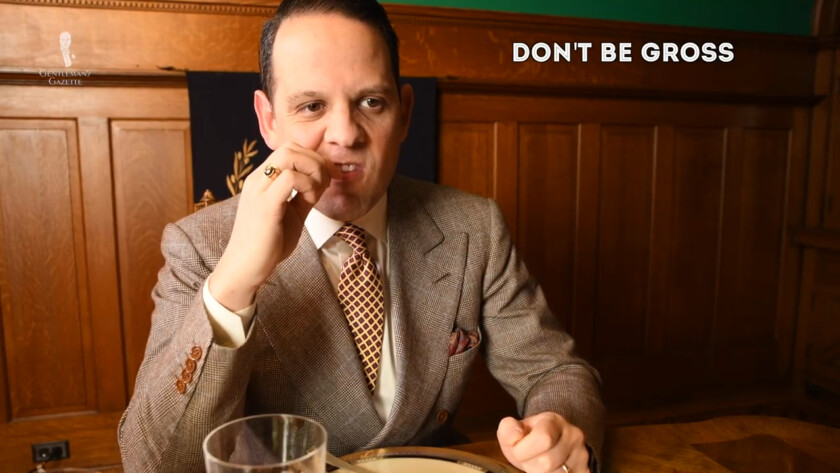
If you are accustomed to using a toothpick after dinner, do not employ it at the table. After dinner, you can go into the bathroom and clean your teeth fully there in a private setting.
What To Do With Your Elbows While Eating
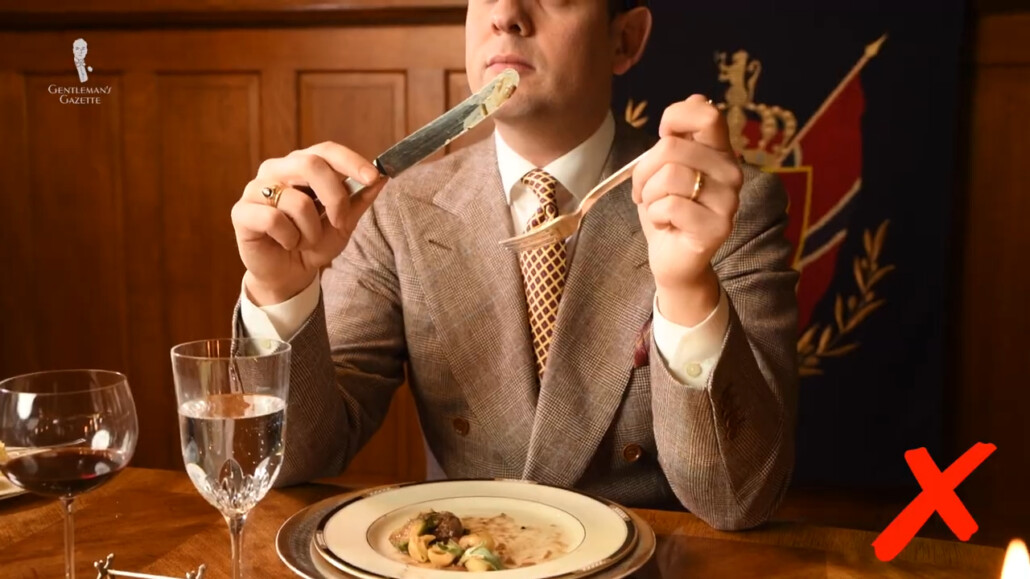
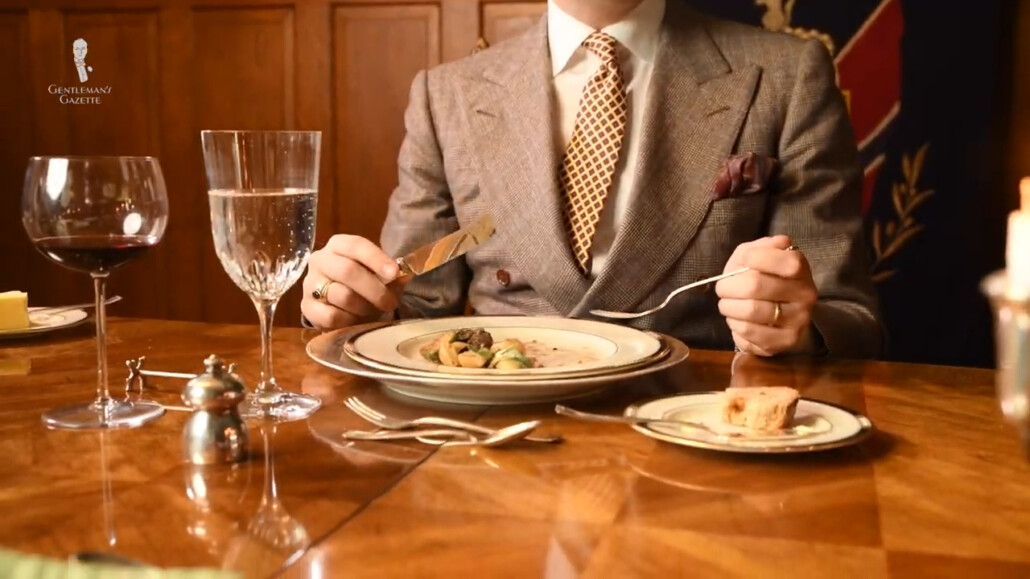
Keep your elbows off the table during the meal. This will prevent you from interfering with the meal of the guest next to you, and you will also be less likely to dirty your clothing accidentally.
During conversations after dinner, especially in more casual settings, you can lightly rest your elbows on the table, although it is more conventionally appropriate and indicative of positive body language to rest your wrists or forearms on the table edge instead.
Learn how to be the perfect guest!
What To Do at the End of the Meal
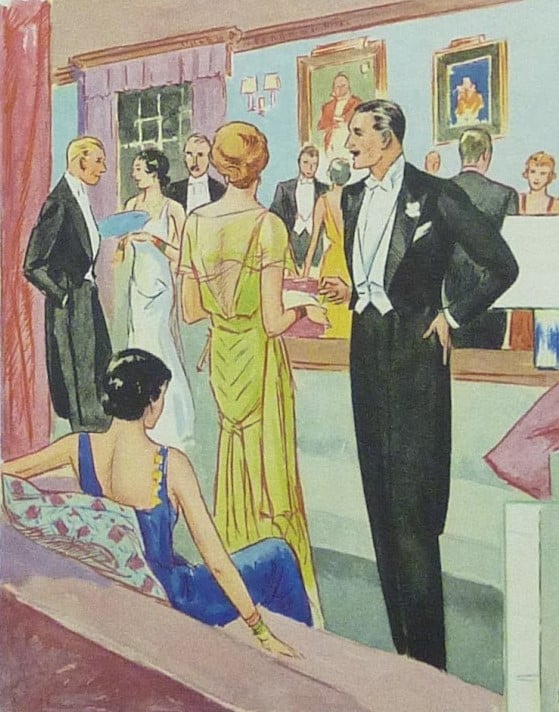
When you are done with your meal, do not push your plate away from you. At a restaurant, the waiter will remove them at the appropriate time.
If you are dining at someone’s home, the host or hostess will indicate when it is time to depart from the table. At this time, you can ask for permission to help clean up. If your offer is declined, politely accept – do not insist upon helping.
The Dessert Course
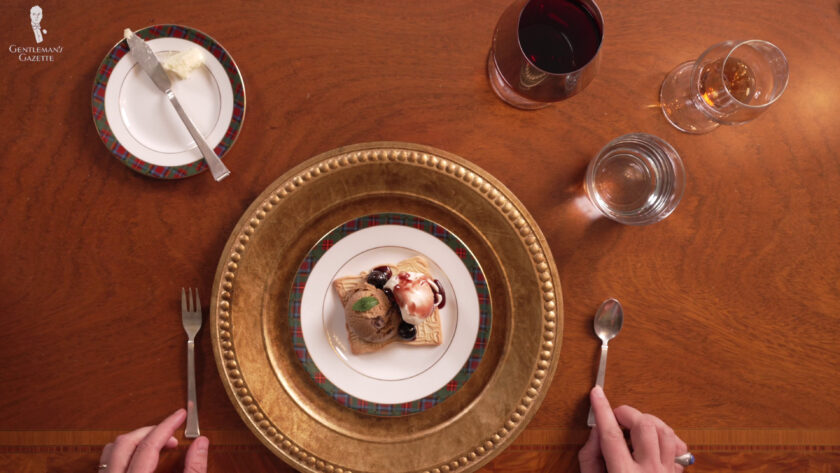
Dessert is sometimes served at the dinner table after the plates and refuse of the main dinner have been cleared away. In other cases, your host will invite you and the other guests to adjoin to a different room for dessert, coffee, or after-dinner drinks.
You DON’T need to follow these etiquette rules
Leaving the Party
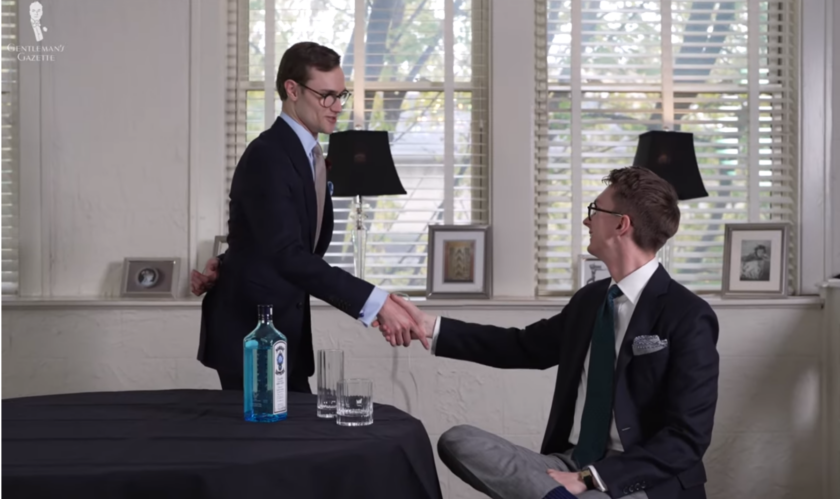
In most cases, it will be clear from the demeanor of your hosts and the particular hour when it is time for the party to conclude. Endeavor to leave when others do so, departing neither excessively early nor late relative to the other guests. As you are leaving, be sure to thank your host for a lovely evening personally.
Do not linger unless you have been specifically asked to stay behind to help clean up. If the host is starting to tidy up, it is time for you to leave.
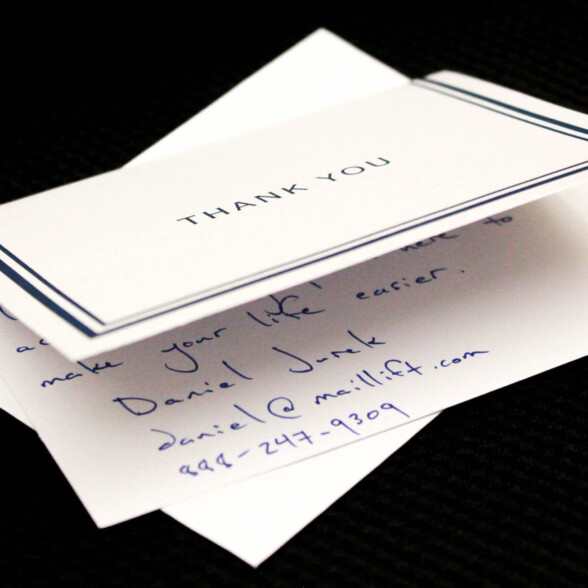
Don’t forget to say
Thank You
The day after the event, be sure to write a brief but personable “thank you” note to express your gratitude for a lovely evening. Your host went to considerable trouble to entertain you, and a kind word is the least that you can do as recompense.
Learn even more about what to do after the meal is over
Conclusion

It is important to remember that table manners vary considerably according to time, place, and culture. These particular suggestions are typical of informal dining in North America, but their practice will put you in good stead no matter where you are. Most of all, we hope that we have made it clear that proper table manners are predicated upon nothing more nor less than a genuine desire to make your hosts and fellow guests feel respected and appreciated.
Did we miss any tips for good table manners? Let us know in the comments below!
Outfit Rundown
Today Raphael is wearing an ensemble ideally suited for an elegant dinner party, with just enough personality to help him stand out in all the right ways. His main garments are suit separates creatively combined, featuring a jacket from a brown and blue Prince of Wales check suit and a pair of trousers from a blue suit.
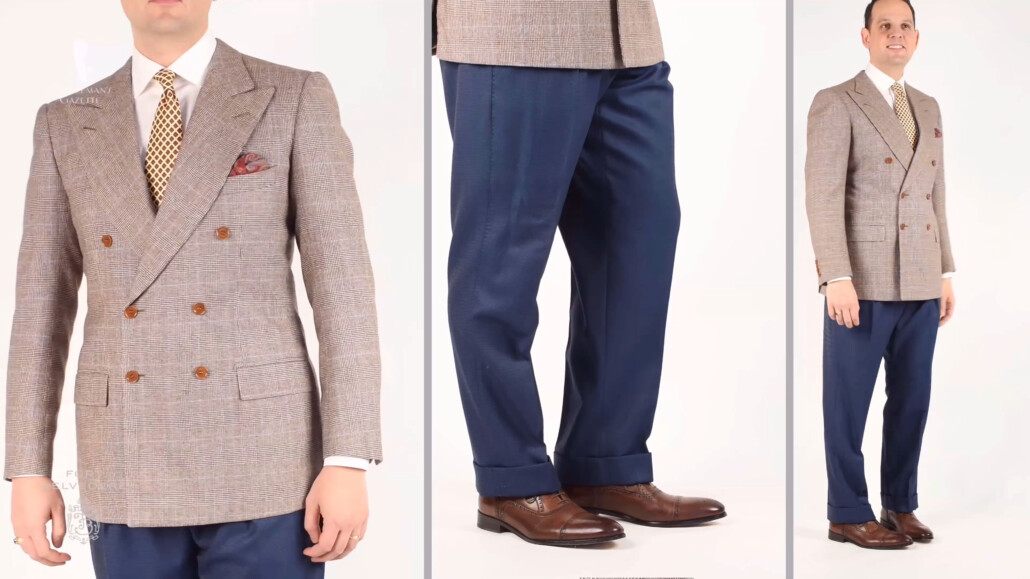
His shoes are brown half-brogued oxfords with a gorgeous hand-finished patina. He ties everything together with a pair of brown and light blue socks that highlight the color of the jacket while also distinguishing the trousers from the shoes.
Raphael’s shirt is classic white with button barrel cuffs. His tie is made of English madder silk, and the pattern ties together his shirt as well as the pattern of his jacket while providing sufficient contrast and pattern to stand out from the check of the jacket.
Raphael selected the wine-red pocket square with blue and gold detailing because it harmonizes with colors throughout the outfit. He opted for one in a silk-wool blend because it nicely offsets the richness of the flannel of the jacket and the sheen of the silk of the tie.
Along with the necktie, this pocket square is one of the many original pieces designed by Raphael and available at our Fort Belvedere shop.
On his right ring finger, Raphael is wearing a gold ring with a dark star sapphire that drastically changes tone in different lighting.
Have you mastered the etiquette tips we laid out in this guide? Were there any we missed? Let us know in the comments!
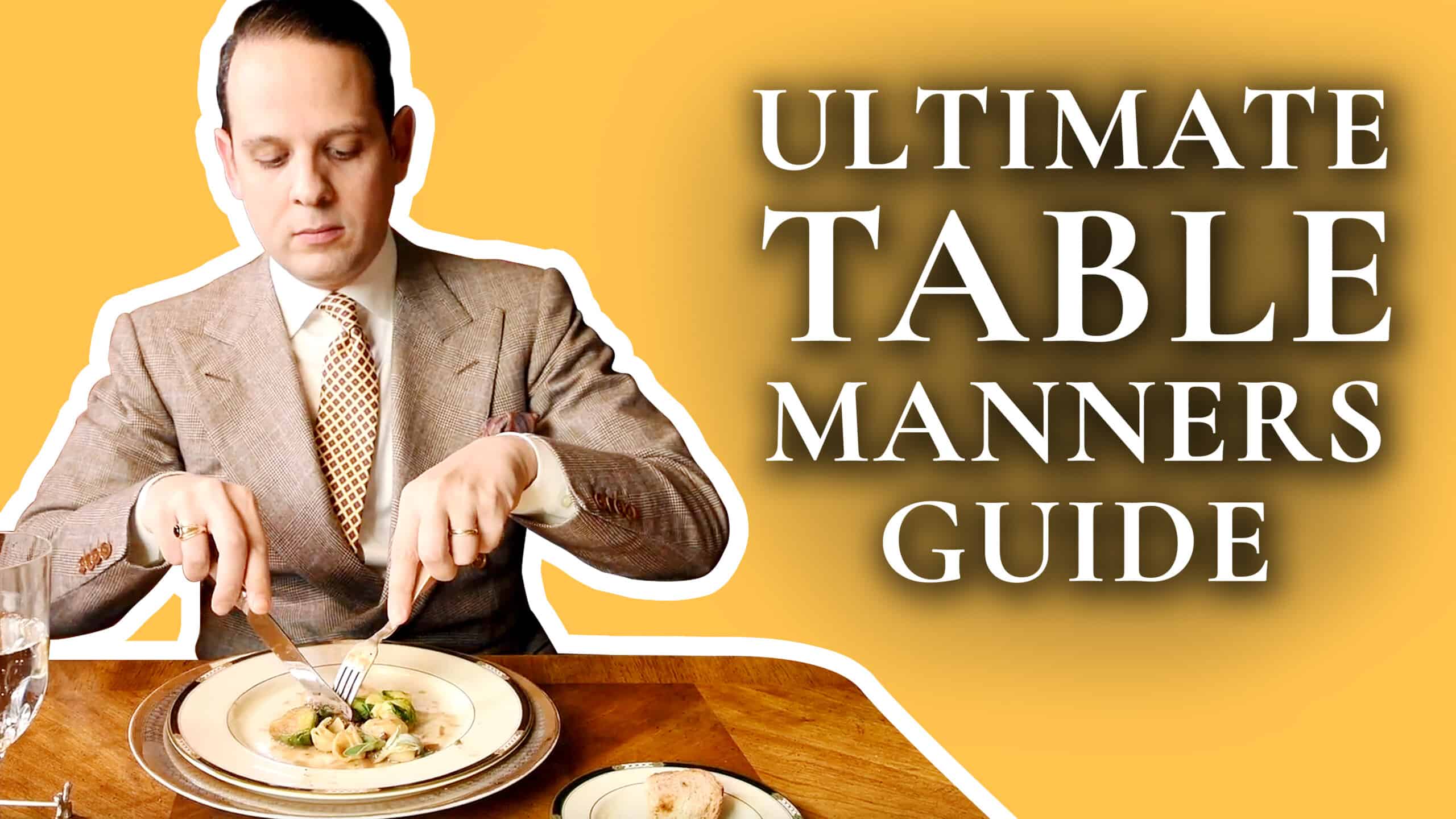




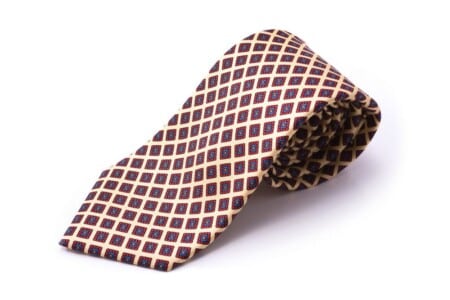
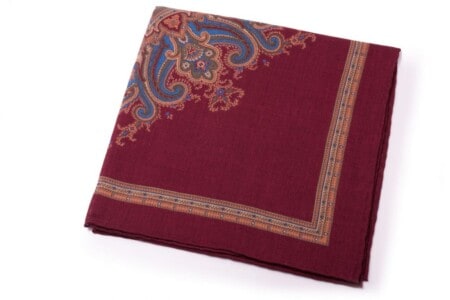
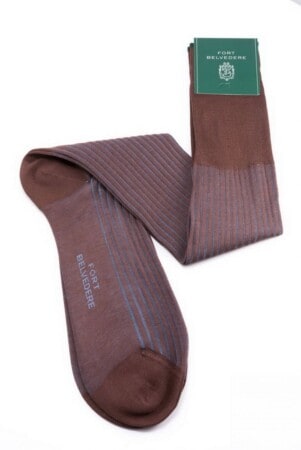
Regarding your witness to eating a multi-layered club sandwich while in Paris. My wife and I recently returned from Paris and learned Parisians, with very few exceptions, never eat with their fingers. Wanting to fit in, we enjoyed everything we ate following this rule even down to my ordering a simple hamburger and fries. It took a little getting used to but quite honestly, it was enjoyable, refreshing and one which we adopted since our return. Keep the articles coming, I enjoy them immensely.
Thank you for your kind words. I, too, have found great pleasure in eating most foods with a fork and knife since our return from Paris.
I eat a pizza and hamburger with knife and fork when possible because I like clean hands. What surprises me though is how many Americans eat with just their fork even though there is a knife at the table.
Once they approach the end of their meal, they use their finger to put the last bit of their food on their fork. Some even lick the finger afterwards. I experienced that across the board, even when people wear suits and consider themselves to be well dressed…
Yes. In the end it is about common sense… and respect. My grandfather was able to eat any piece of fruit using a fork and a knife. Now those old manners may have been lost, but knowing them, and where and when to use them, is basic.
Excellent article, by the way!
You rely quite heavily on an “informal”/”formal” distinction regarding the nature of a dinner. Where do you draw the line?
It’s a real and useful distinction, for sure. But when you say, “In the United States, most dinners are informal,” I’m not sure what exactly you mean…
Hello and thank you for your question. I am using formal dinner to mean the following: a multi-course dinner (a minimum of four, with six being average), served with fine wine and includes demitasse, liquer and brandy; the table setting uses crystal and porcelain atop linen. The pieces of that table setting maybe quite old; there is a butler for every four to six guests; and the experience is highly ritualized. I also believe attendance at a formal dinner party requires a man to wear a tuxedo. This list is not exhaustive.
My next article will go into much greater detail about formal dinners.
Well said. Although there are proportionally very few restaurants that serve coursed menus, it seems to me like there are more and more restaurants offering these multi course meals now :).
Jay,
I agree with your distinction, although there is probably more of a continuum between formal and informal dinners, not such a digital divide, but this is helpful to broadly define the categories.
I would be surprised though if there was indeed a butler for every four to six guests, unless guests brought their own butler with them – I suppose you mean a footman for every four to six guests? Or is the term butler applied to just any male domestic staff in the US?
It should also be stressed again that there are many fine details where table etiquette differs not only between the US and Europe but even within Europe, between different countries.
dE
Only governmental (and royal) banquets would be the kind of formal dinner where you would find a servant for every 6 guests.
Also, I would never wait for a waiter to eventually come and pick up a dropped utensil, chances are way too high someone else will have stepped on it in the mean time. Same applies to informal dinners, btw, cause I wouldn’t want to have a fork, knife or spoon and the accompanying food stain the carpet or floor, while I wait till after dessert to pick it up.
On the matter of the spilled wine, I have to admit that I have never ever experienced any host to demand the guest who spilled it to pay for either having it cleaned or replaced. That would be considered rude. Yes, you will apologize, but the offer is mearly an act of courtesy that is never picked up.
Regarding the passing of spice shakers or any kind of food that is served on the table, there should always be enough present for the situation of having to ask for it not to occur, because that would mean you have to be a bother to others.
Apart from that, I miss the ironed table cloth (iron them on the table to get rid of any creases!).
“Only governmental (and royal) banquets would be the kind of formal dinner where you would find a servant for every 6 guests.”
While I believe this is true in a public sense (i.e. what we in the public know about formal dinners), there will always be and have been private affairs – large ones – with several butlers. We just never hear about them.
On spilled wine, I agree a host ought never demand that something damage should be cleaned or replaced. As a guest, and this is entirely my personal ethics, I would have it repaired or replaced, regardless of what the host said to me.
And like you, I miss an ironed table cloth, which is why I always iron ours when we are entertaining.
Perhaps your next article will clear this matter further, because I took it as you were saying that a private household would have such a vast number of regular servants that they would suffice to guarantee a servant for every 6 guests, which would be highly unlikely. Labour costs are way too high for that, nowadays. Yet if you were referring to hired staff for a formal event’s dinner, it would be a whole different matter, as then there would usually be one or two servants per table.
On the part of a guest damaging or destroying parts of the glassware, china or the table cloth, I have to disagree. As host you should always set the table with pieces you can afford to replace. Otherwise, you keep them in the cupboard.
I would never expect guests to replace 150$ a piece plates or crystal glasses, because they dropped them by accident.
In regard to replacements, legally it is clear that the one who destroys it must pay for it. Whether that’s enforced or not is entirely up to the host. I wouldn’t ask a guest to replace something but each to their own.
I noticed that on cruises you may have one server for each person for formal dinners. So everybody receives their food at the same time, they wear white tie…
We bought a beautiful table and so we use charger plates rather than a table cloth. Interestingly, the British Royals seem to do that rather often as well – not that I could tell from first hand experience, just based on the documentaries I have seen in the recent past.
I agree completely that the distinction between informal and formal exists on a continuum.
As I understand it butler is the term now used. Most households able to afford such staff rarely have a footman, instead preferring to hire a butler who may also function as a valet, footman and majordomo, depending on the occasion. The term, as you suggest, is broadly applied to male – and also female – domestic staff who are trained as butlers.
The butler on staff with a family is usually responsible for hiring temporary butlers for large formal functions. In this way a guest would not need to provide their own butler.
And, a resounding yes to the many fine details where table etiquette only between the U.S. and Europe but also within Europe. I will cover some of those differences in the next article.
Americans often speak of Europe, not realizing that there are huge differences between the countries on many levels. At the same time, most Europeans talk about Americans in the same way although life and people are very different in New England, Fargo, Louisville and L.A. I guess the further you are away the more likely you are to generalize.
I am in the fortunate position that the main dinner service I use for entertaining was a wedding present to my great, great, great grandmother. It was made by Minton in 1846 and is placed on the dinner table every time I invite friends to dine. Everything I own, regardless of age, is used on a daily basis. I believe in the old adage, things will eventually be broken!
I made a gift of one of my silver canteens of cutlery to my nephew in France, as I have no children of my own and wanted to ensure it remains in the family. I retained the smaller canteen, which has 12 full place settings.
Reading this article, I was struck by the subtle differences between fine dining here in the UK compared with that practiced in the USA. In particular, I was noticed the comments concerning people eating with their hands, and using their forks without the accompaniment of the knife in the accompanying video.
This last was something I noticed appears the accepted custom in the greater American society. Whilst living in NY for a while, my friends there believed using of the knife and fork together was a rather difficult task to accomplish. One in particular actually asked me to teach him how to crack open a boiled breakfast egg, using the eggspoon.
By the time he mastered the art, we were both heartedly sick of eating eggs.
“Whilst living in NY for a while, my friends there believed using of the knife and fork together was a rather difficult task to accomplish. One in particular actually asked me to teach him how to crack open a boiled breakfast egg, using the eggspoon.
By the time he mastered the art, we were both heartedly sick of eating eggs.”
My wife claims we are lazy in the U.S. with regard to using a knife. We don’t want to clean the extra utensils; but that doesn’t explain why we don’t use them in public nor does it answer Raphael’s observation that we have knives on the table, which we then never use.
Your story about the egg spoon made me remember the first I used an egg spoon. I was traveling with my family in Germany. The small inn we stayed at provided a soft boiled egg, cheese and the delicious, hearty dark breads for Germany is rightfully famous. Next to the egg sat a tiny spoon. I asked my mother what that spoon was for, and she said, “To eat the egg, of course!” She then gave me a lesson in how to properly eat a soft boiled egg with an egg spoon. I’ve come to believe the egg spoon is an almost perfect utensil.
Back in the day, silver would impact the flavor of egg and the steel the taste of fish. Hence they used mother of pearl spoons for eggs and came up with a fish knife. Today, we don’t really have that issue of tarnished flavors anymore and hence I don’t think they are absolutely necessary. It’s more of a tradition I suppose.
Well, I don’t kow about the egg sizes in the USA, but a typical German egg can’t be eaten properly with a standard sized tea spoon.
Our WMF set has two sizes of tea spoons and the smaller one works just fine…
Delightfully refreshing … It may come as a surprise to the Western World, but we here in Pakistan are quite familiar with the etiquettes outlined; and that may largely be attributed to the colonial times.
Such etiquettes as a norm were meticulously instilled when I was growing up by my late mother who herself had attended a Convent school that went back to the British era. In fact she was very particular on the matter of courtesy and manners at large. And while in our society it is mostly considered the ladies’ department, she also taught me how to lay the table.
Your story about your mother reminds me of the supreme importance parents play in instilling manners and civility in children. These are lessons that pay untold benefits as we age.
Bravo!
In the ‘Cutting Meats’, what is that hand doing with that fork? ‘Writing home to mother’ with the knife is not good (the cure for this is pistol grip knives,) but I have never seen a fork held that way.
I am an Etiquette Teacher in Australia and enjoyed your video. However, there were two things that I differ from you on:
1. I teach to only eat with the tines of the fork held downwards – never to scoop the food up with the fork.
2. Have the butter dish on the table when taking butter – do not have it in the air.
I would be interested in your comments on these two matters.
I am puzzled by the very chic woman in Paris. Were you with Jay Sennett when he saw her or were there two different women?
Here is a related question from the UK. As a frequent visitor to the USA in the past, it often puzzled me somewhat to the practice of the Americans leaving their fork and knife after the starter for use with the main. Quite often I left my cutlery after a salad on the plate in a finished position only to have the waiter remove them (used) and place them back on the table to use again. I could never get along with that and always requested “new” cutlery when it was done. I’d like to understand if this indeed is normal throughout the USA. Maybe I just went to eat in some dive.
Maz, I live in the Washington, DC area, and I can confirm that this has been the practice I’ve observed at most moderately-priced restaurants throughout my life.
Mr. Sven:
I do believe that you should reconsider your advice about a gentleman refusing to rise when a lady leaves the table. It is an integral aspect to good manners and etiquette.
What about a teenager who sits straight at the table, knows all his manners, but dribbles food (dry and wet) every time he eats! He refuses to lean forward enough so that his food actually entirely makes it into his mouth. He seems oblivious to the physics of eating. What advice!?
My wife and I are planning on eating at some nicer restaurants during our next vacation, so thanks for sharing these etiquette tips. I like your point about turning off your cell phone during the meal. I don’t want to offend anyone at the restaurant, so I’ll be sure to do this.
Thank you so much for the educational post.
It sure was nice to know that one of the things that a person should pay attention to while eating at a restaurant is to eat in small portions. To be honest, I find it weird when a person eats in large chunks. I will remind my friends of this as we intend to eat at a restaurant soon. I want them to mind their manners. Thank you for sharing.
I’m always so hungry after dinner parties. If I’m not engaged in conversation, I’m being directly talked to and my attention is focused on the speaker. I’m embarrassed to take a bite while they are looking and speaking directly to me. Most times everyone is finished with a course and I’ve only had a couple bites before it’s taken away. What am I doing wrong? Or do I just settle for fast food on the way home?
I watched amazed this video with my wife and we learn it our son and shared it with our family as well, wish to have this manners in all families!
Thanks for a good job, have a good continuation.
Jaro, Slovakia